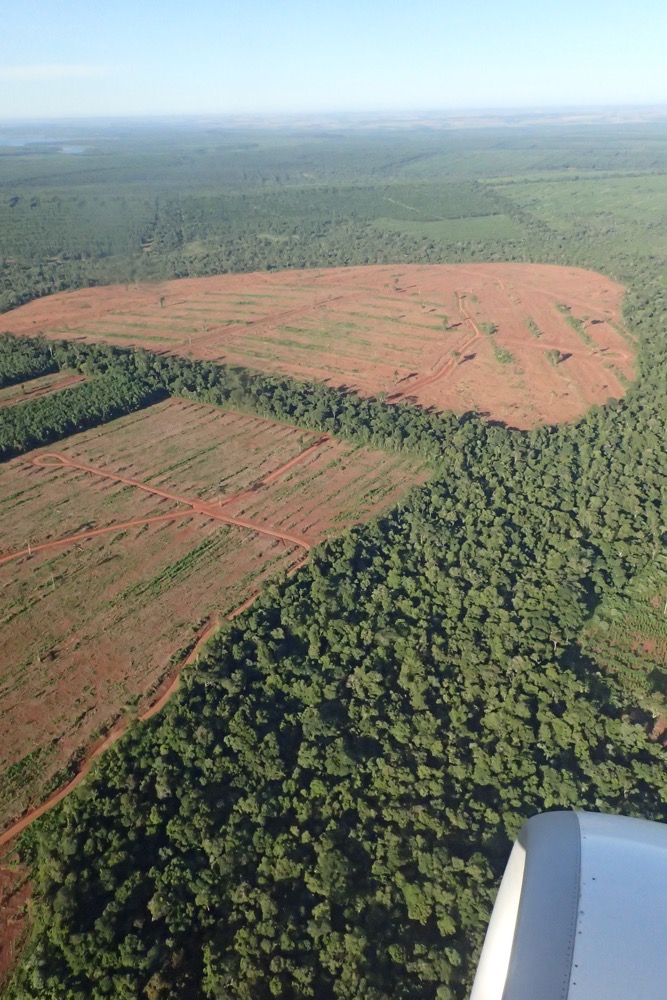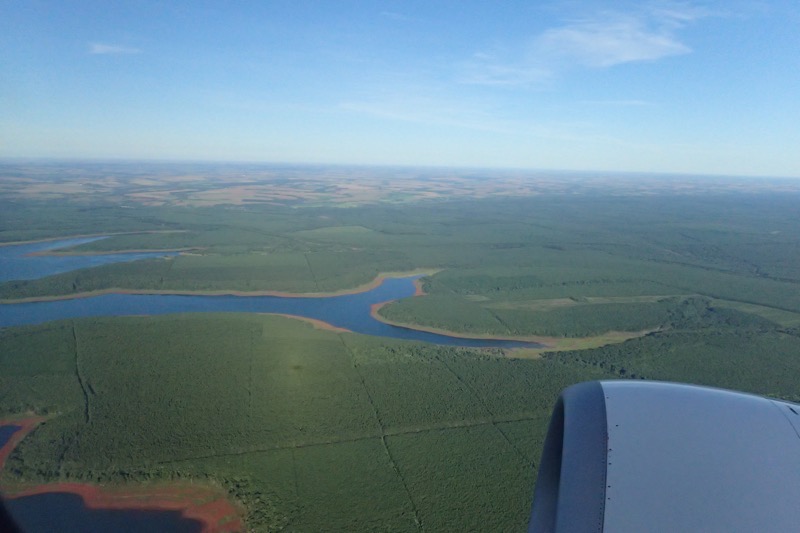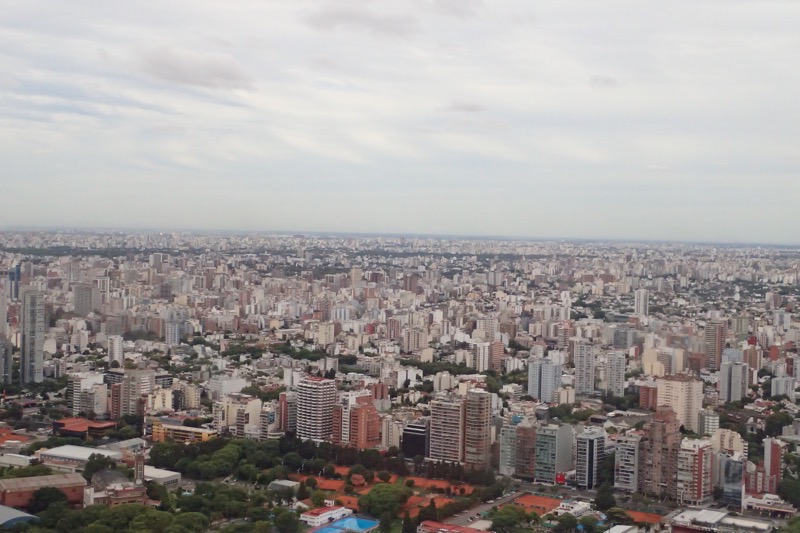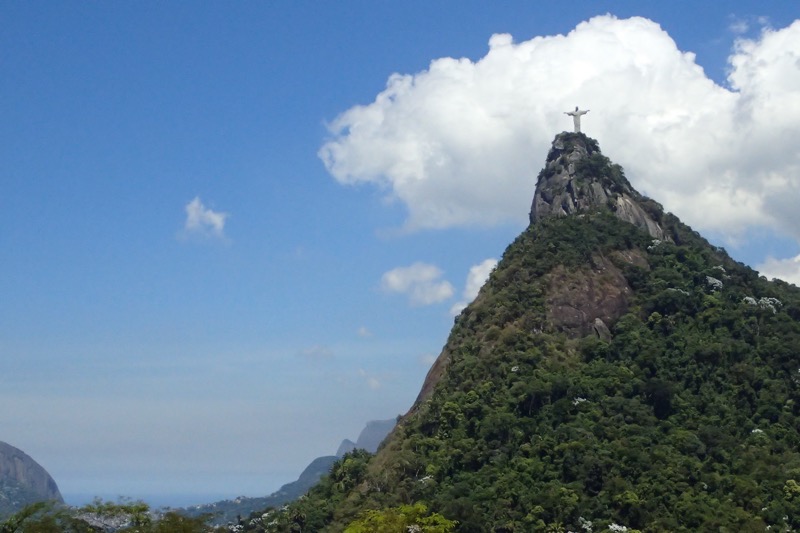
Got to Rio de Janeiro bright and early this morning and sailed in through the most beautiful harbour. out my cabin window was the famous Ipanema and Copacabana Beaches, and behind the pristine white buildings rose the famous Corcovado Mountain and its Christ the Redeemer statue.
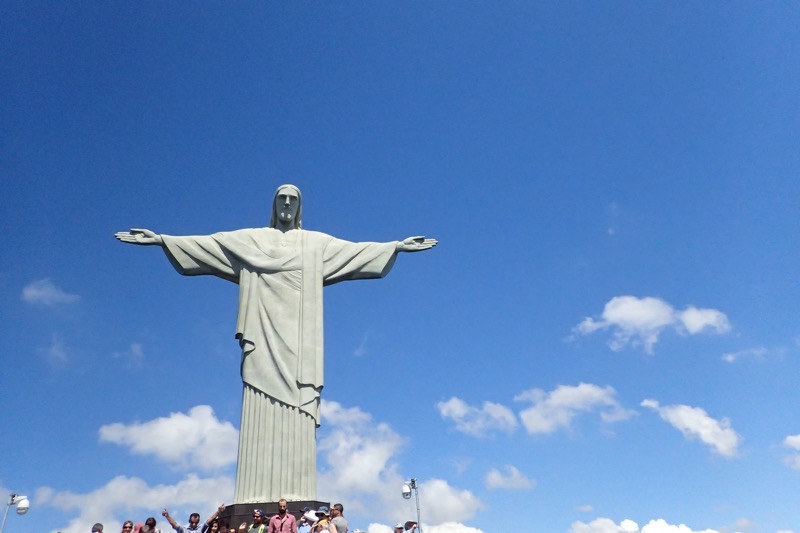
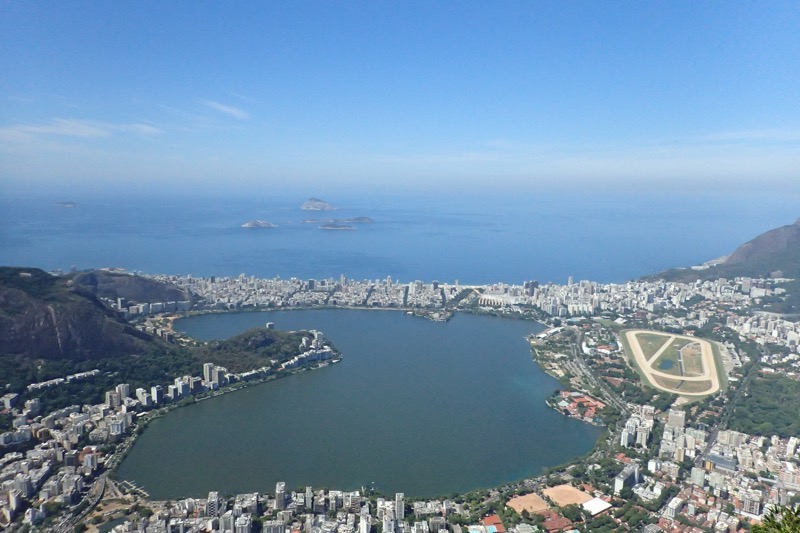
Talk about spectacular. Easily as impressive as sailing into Manhattan or Sydney Harbour with their familiar skylines and recognisable landmarks. We met out guide, Letitia, (Lettie) at the port and like half the tourists in the city I think, we hightailed it straight to the Corcovado Mountain to try and beat the crowds. I was in the front seat of our vehicle, seated beside the guide, and was equal parts impressed and alarmed at her ability to navigate Rio’s chaotic traffic at speed! It was quite a ride – being a known trafficphobe, (and somewhat of a control freak), I surrendered the front seat for the rest of the day so I didn’t have to watch! 🙂
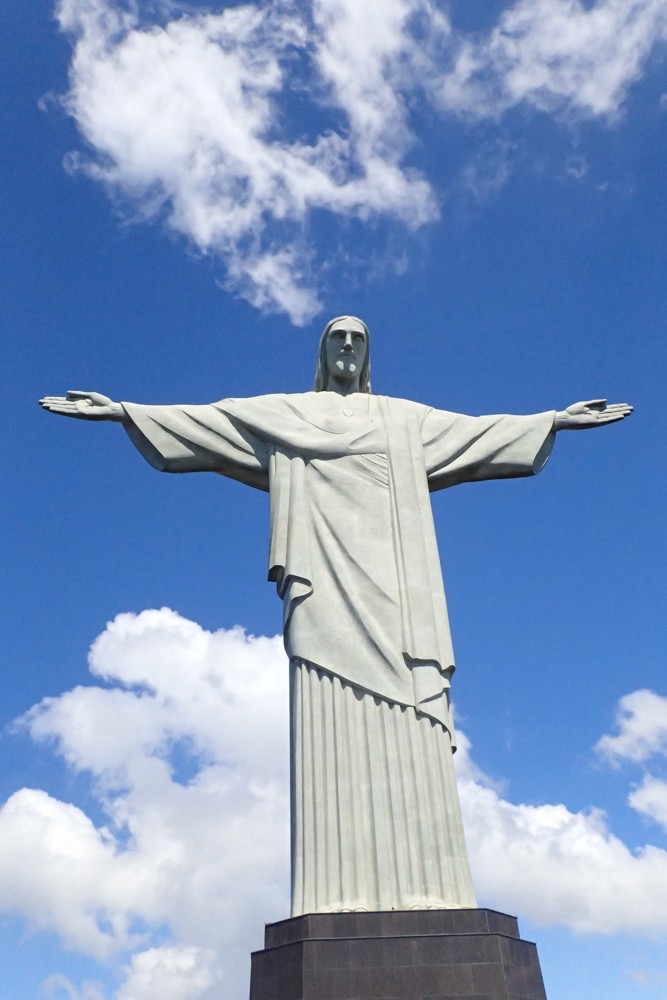
Corcovado Mountain is Rio’s highest peak at 700m (2,300 ft), and is nestled in the Tijuca Forest National Park, overlooking the city. Built between 1922 and 1931, the Christ the Redeemer status is probably Rio’s most famous landmark – it stands 30m tall (not including the 8m pedestal), and its arms stretch 28m wide. It is made of 650 tonnes of concrete and soapstone, and is now listed as one of the ‘New Seven Wonders of the World’ (along with Chichen Itza, the Great Wall of China, Machu Picchu, Petra, the Taj Mahal and the Colosseum).
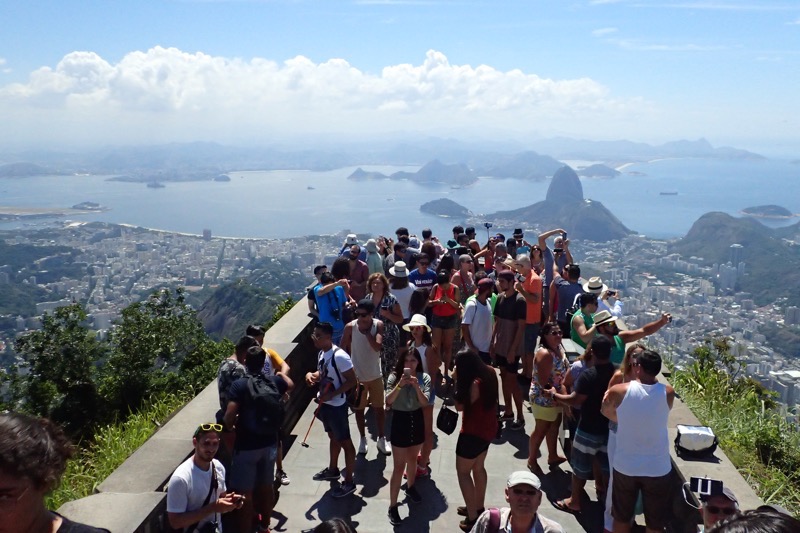
The design, construction and restoration of the statue would take me an hour to relay here, but one of the things I found very interesting about it, was the fact that it is covered in lighting rods. Most people think the statue was of course built to recognise Brazil’s Christian culture, but it serves the dual purpose of also protecting the city from the regular tropical thunderstorms experienced in the area.
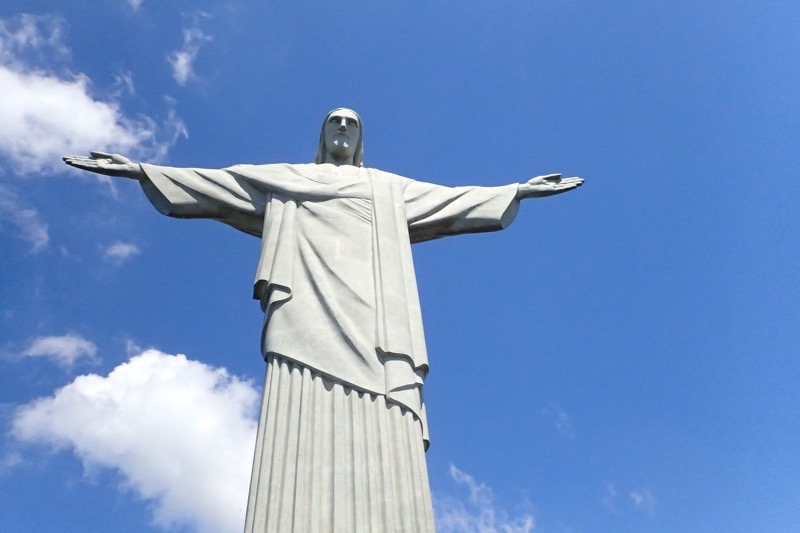
The views over the city from the top of Corcovado are simply stunning – in one direction the beach of Ipanema, Copacabana, Leblon and Pepino; in the other the Downtown area, Lapa, and Santa Teresa districts with wide sprawling favelas hanging onto the mountains in between.
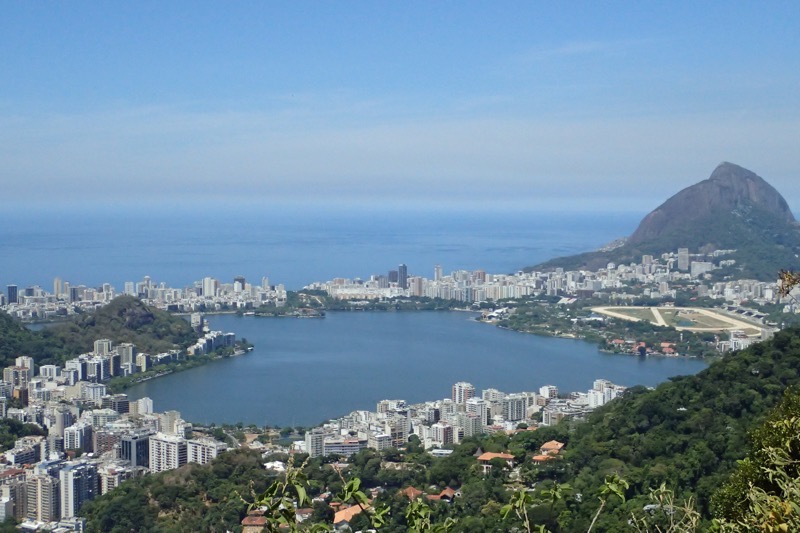
By the time we headed back down from visiting the Christ statue, the shuttles were packed, the lines to get in were as far as you could see and the tourists were cheek to jowl. Any frequent traveller knows that particular felicity that comes with ‘good timing’ and we had just managed to make our stop before things really got crowded up there.
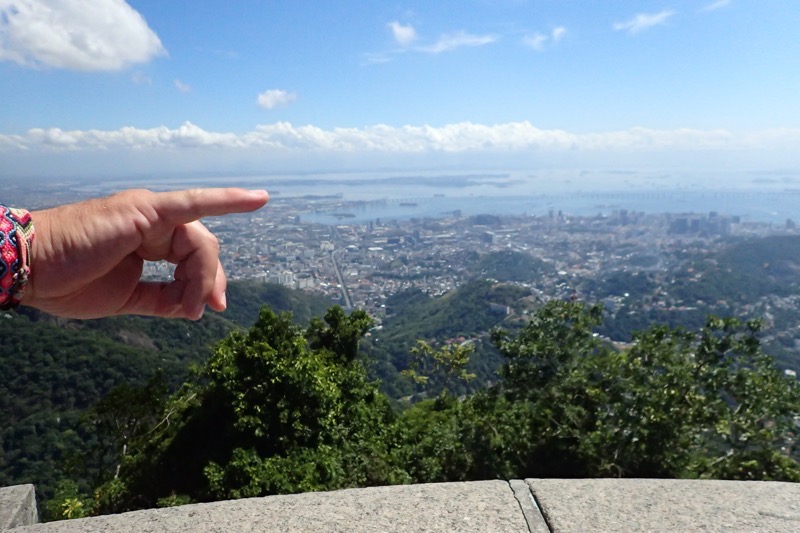
After this we went for a drive through Tijuca National Park, which is a mountainous HAND PLANTED rainforest that almost surrounds the city of Rio. It is one of the worlds most extensive urban forests and covers approximately 8,000 acres. We noticed the vast quantities of jackfruit trees – apparently they are an introduced species but are now considered protected, so they are everywhere.
We made a stop at the Chinese House lookout – which couldn’t be more out of place if it tried! Just a bizarre little Asian style pagoda thing on the edge of a cliff. Very unusual, but again, more fantastic views over the beaches and the city.
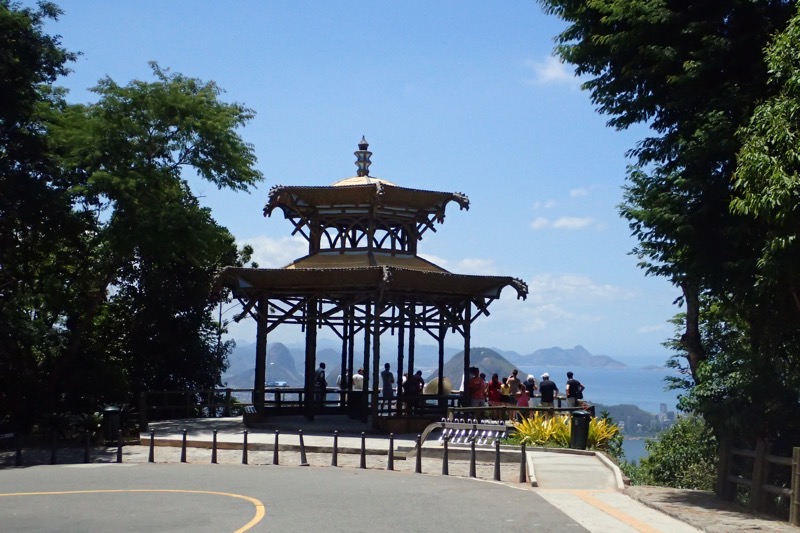
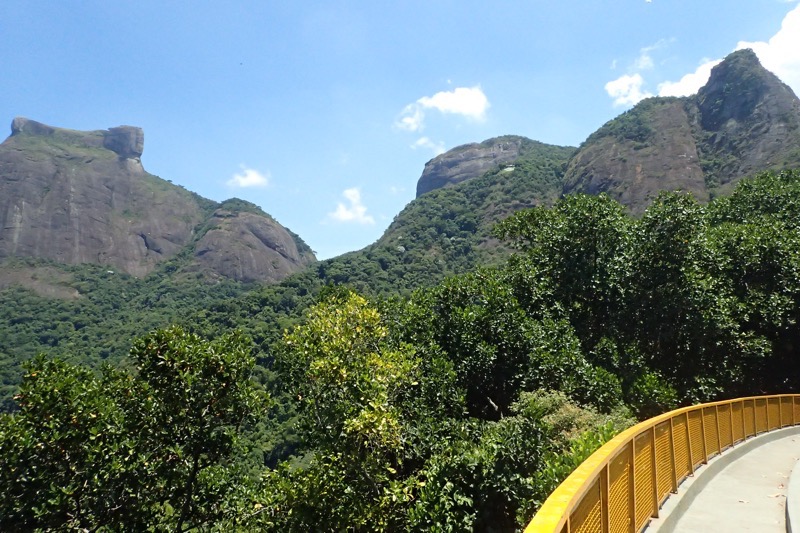
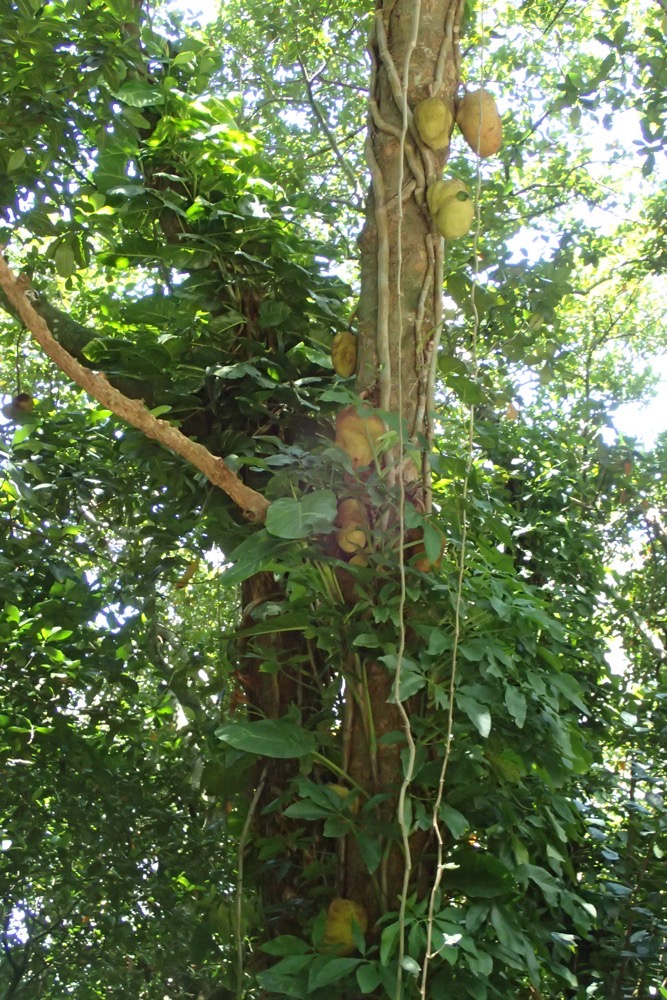
From here, we made out way down to Pepino Pahia (Cucumber Beach?!) and finally saw the beautiful white sands of Rio’s beaches. Absolutely gorgeous. On our way down from the rainforest we saw a handful of hangliders and paraglider floating on the wind and were envious of what must have been their amazing view. You could see up on mountain where they had come from some 540m up!
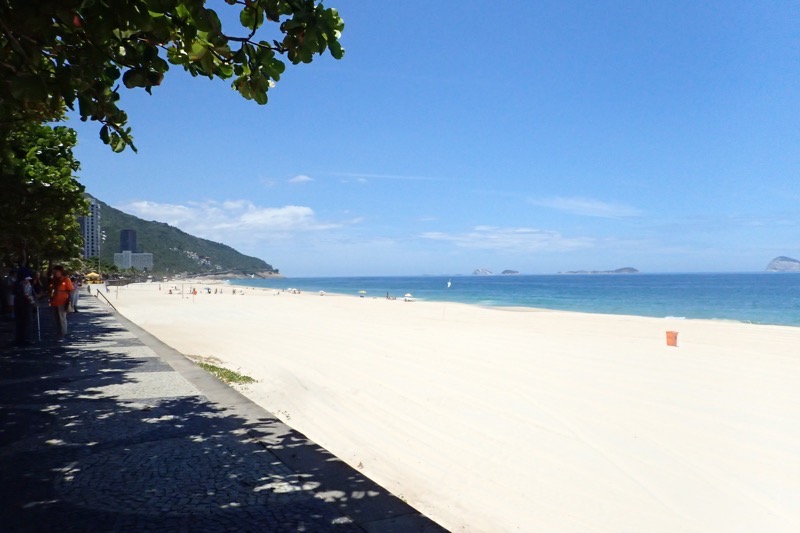
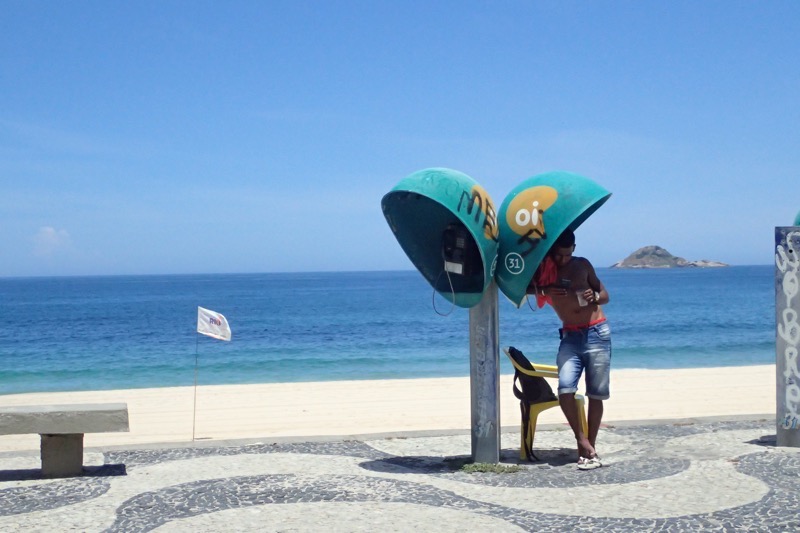
From Pepino Pahia, we made our way around the winding coastline to the world renown, Ipanema Beach! Just beautiful. Generally I am about as white as they come and don’t really do the beach-thing much as it tends to come with connotations of sun cancer, tonnes of sticky sunscreen and sand in uncomfortable places – but these beaches looked so inviting.
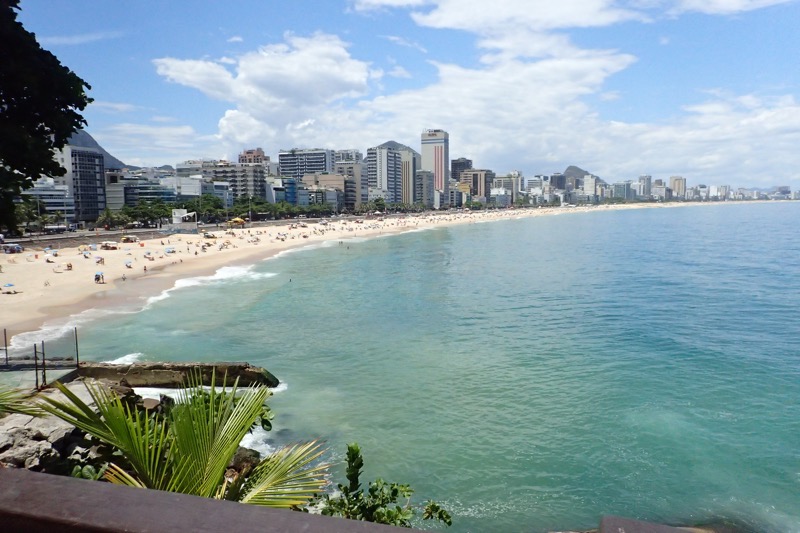
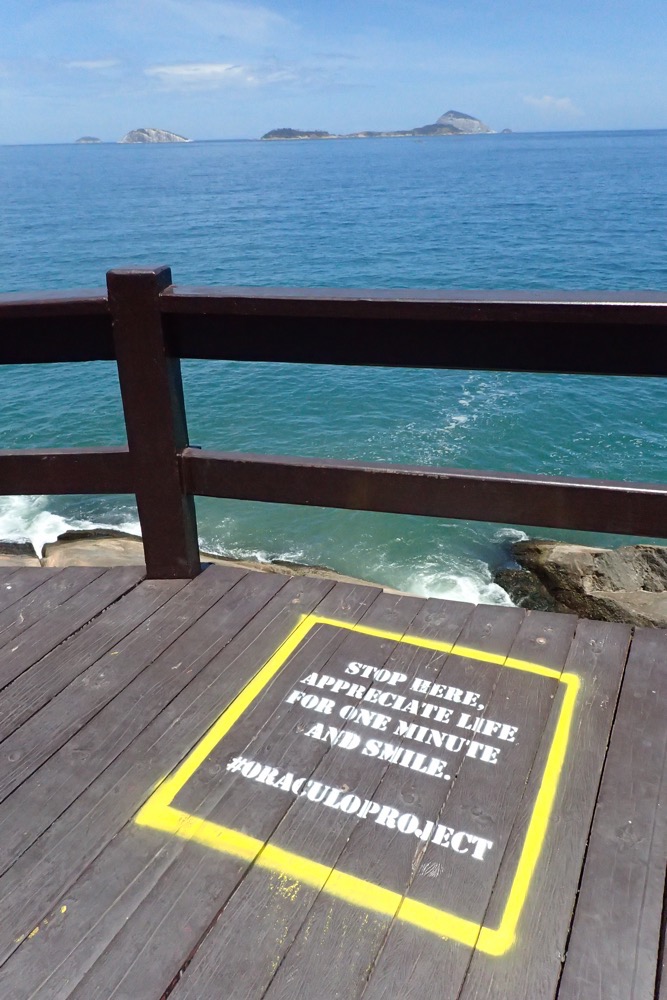
A little further down the road and we came to Rio’s most famous beach – Copacabana. Thank Peter Allen. You’ve been in my head all day long! ‘Today I Learned’… involuntary word association is a particularly difficult thing to overcome!
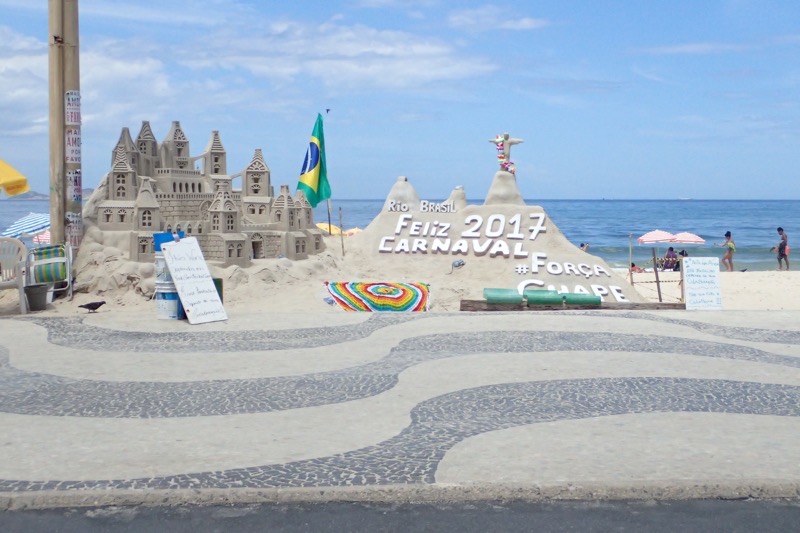
There were many curiosities to be seen here that evidenced how differently people here use their beaches compared to back home. For a start, I noticed that there was no one laying on a beach towel on the sand. They either had brought their own chairs to sit on, or had rented one from the myriad of cheap and cheerful kiosks that dotted the sand. There were quite a few semi-permanent sand sculptures along the Avenue, that people apparently lovingly maintain every day.
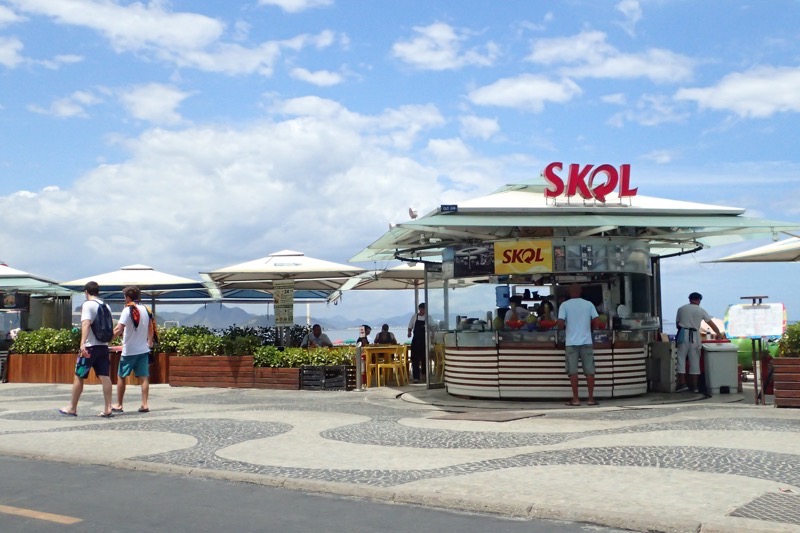
One feature of these Rio beaches that i thought was a brilliant idea, were the wet sand paths that went down to the water. They have porous hoses running down the beaches that sprinkle water on the hot sand – this creates a path that you can walk down without burning your feet! Every Aussie can appreciate the ingenuity of this idea… who hasn’t done that ‘OMG I left my thongs behind!’, dance across hot sand? The water appears to be subterranean and the paths are very effective and well used. Very cunning.
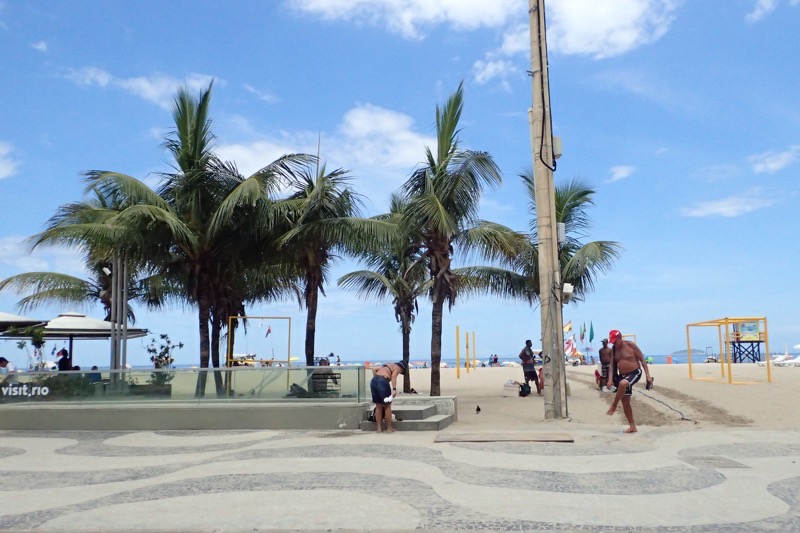
Our next stop was a beach called, Red Beach – because the sand here is not as white as the other beaches… mind you it would happily pass for a standard ‘white sand beach’ in any other country in the world. In the background you can see Sugar Loaf Mountain, which has a series of cable cars on it so you can go up and see the view. Originally it was a place that only serious rock climbers could access, but the government turned it into a tourist attraction to good effect.
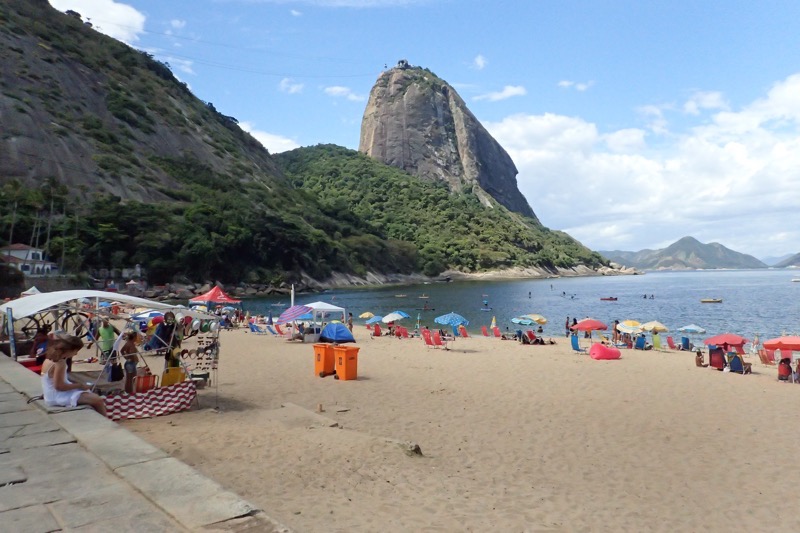
We found a restaurant here and stopped for lunch of local cheese and shrimp empanadas, and a shrimp stew (saffron and coconut curry flavour). Washed down with a favourite local drink made of refreshing pineapple juice and mint; nothing else, no sugar, just pineapple and lots of mint. It was a lovely lunch with an amazing view!
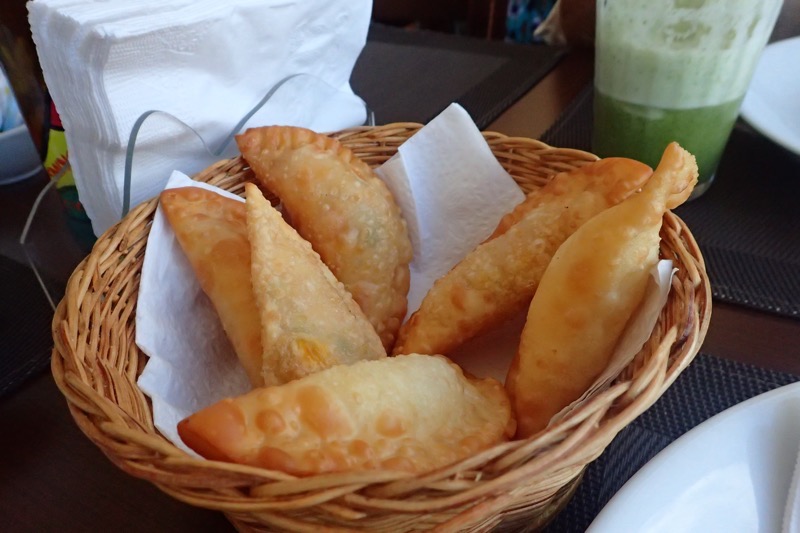
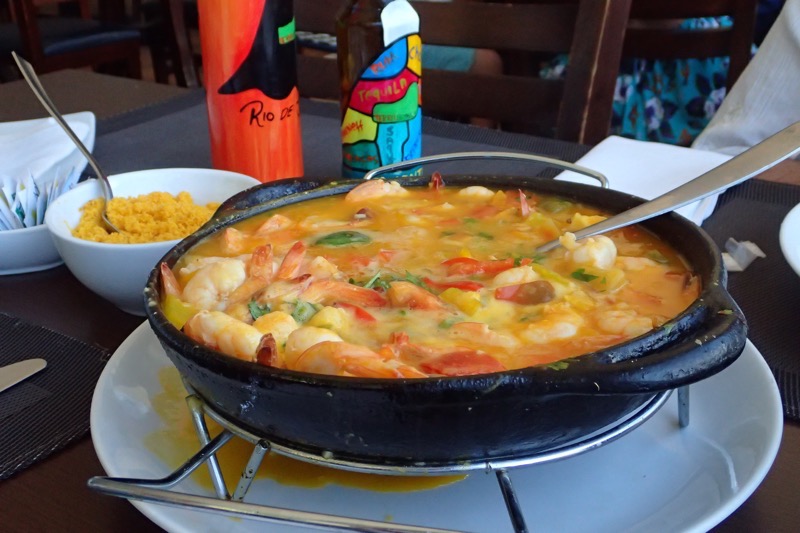
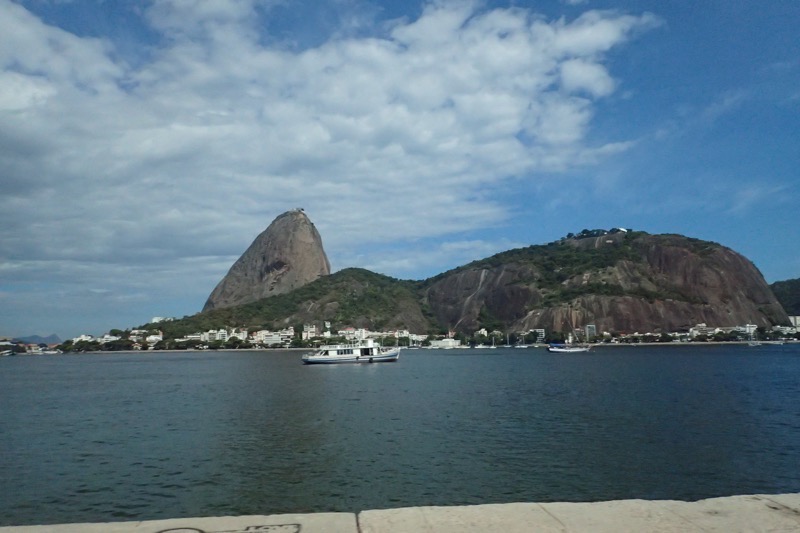
After lunch our plans took us to the Downtown area and the Lapa district. One of the things I particularly wanted to see here were the Escadaria Selarón. These are a set of world famous steps created by the Chilean artist, Jorge Selarón. It started in 1990 that Selarón started renovating the dilapidated steps that were on the steep street out front of his house. Many people mocked him for his bright choice in colours as he used lots of blue, green and yellow (Brazilian flag) coloured tiles. He was primarily a painter, and this was just a side thing, but eventually it turned into a bit of an obsession.
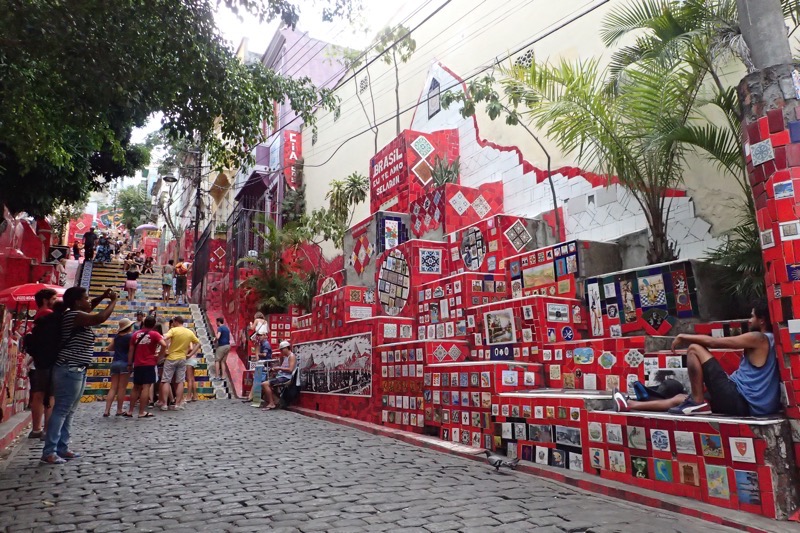
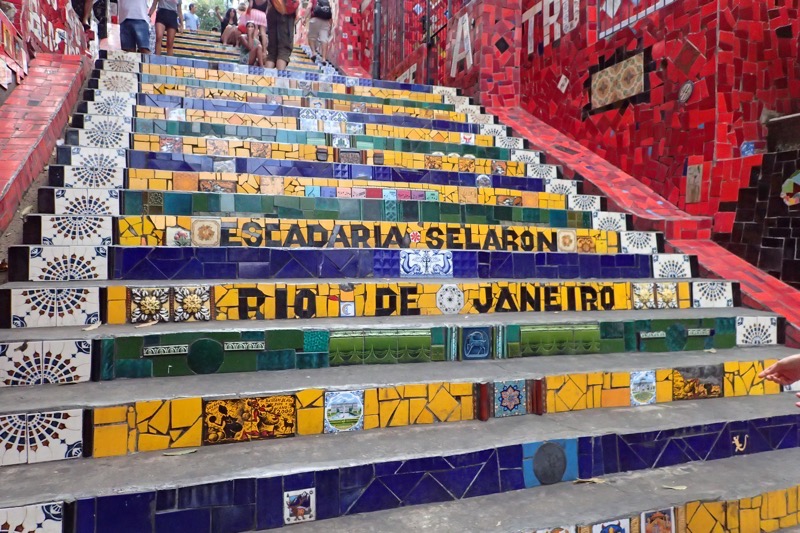
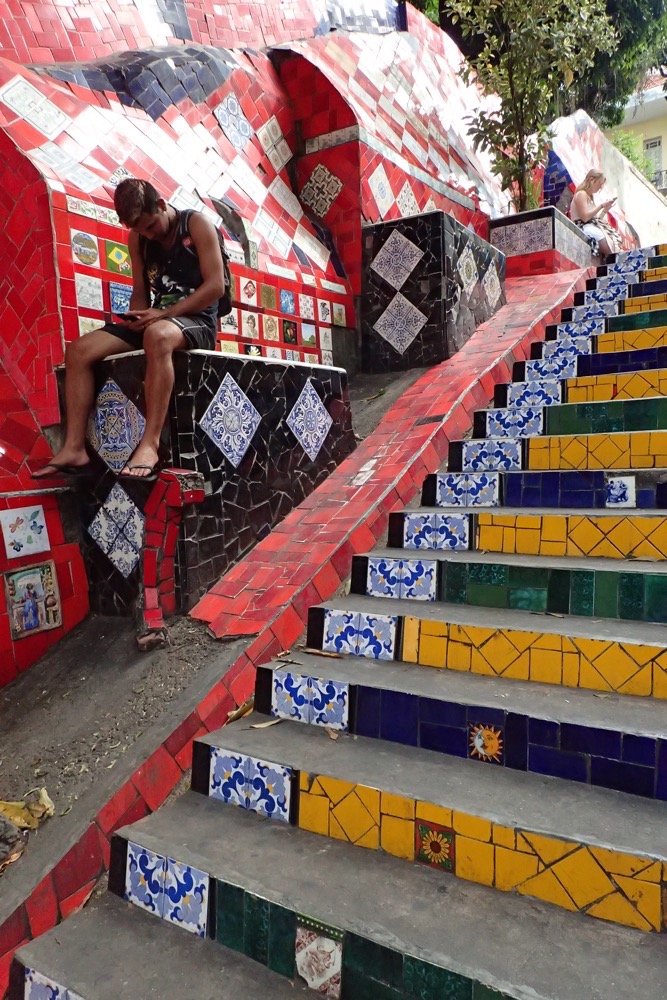
Given Selarón was a bit of a struggling artist, he eventually started to sell his paintings to fund the mosaic steps (oddly most of his paintings were of the same pregnant woman, said to be his wife who died in childbirth – and who can be seen painted into the tiles of the steps), and apparently he was constantly out of money. Eventually he covered the many, many flights of stairs in ceramics and tiles.
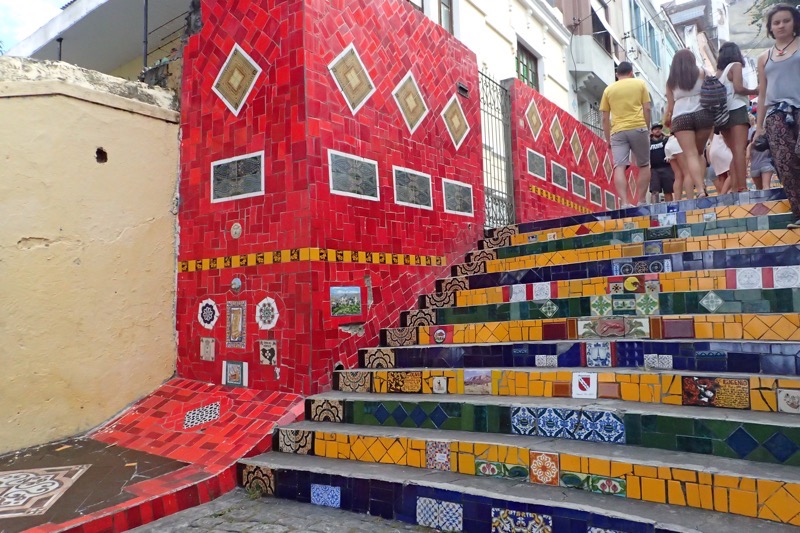
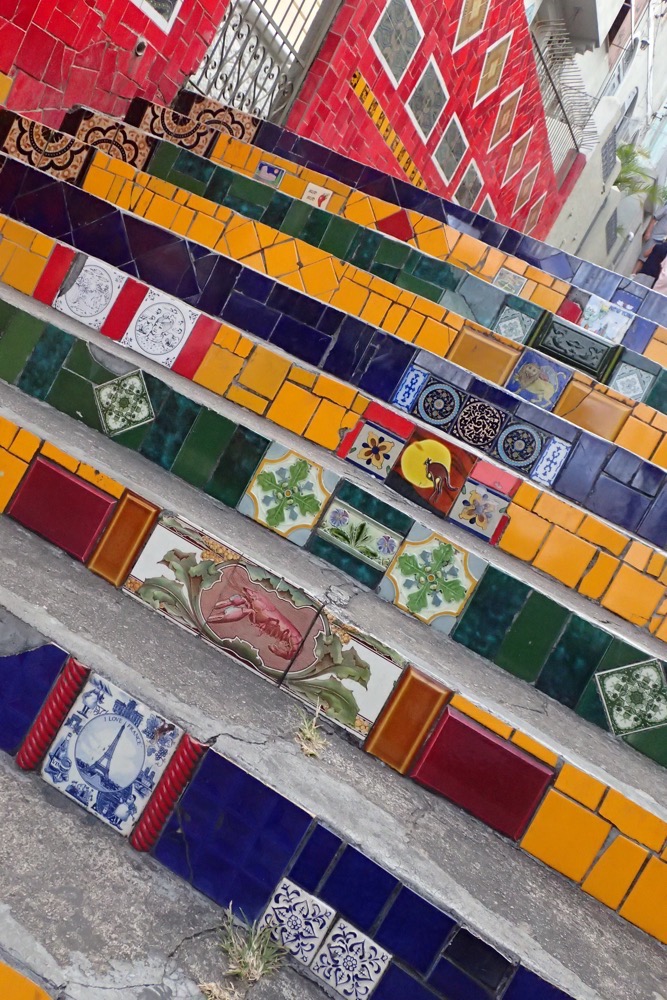
The steps go through the Lapa and Santa Teresa districts in Rio, and there are over 215 steps covering something like 130m in distance. Now, there are thousands of tiles that have come from countries all over the world, as people interested in this unusual art project have bought tiles here to contribute to this piece of art that continues to evolve.
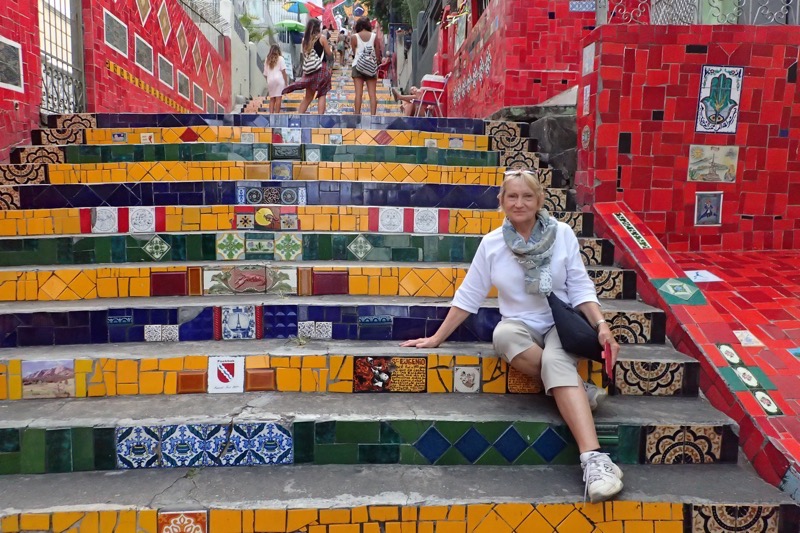
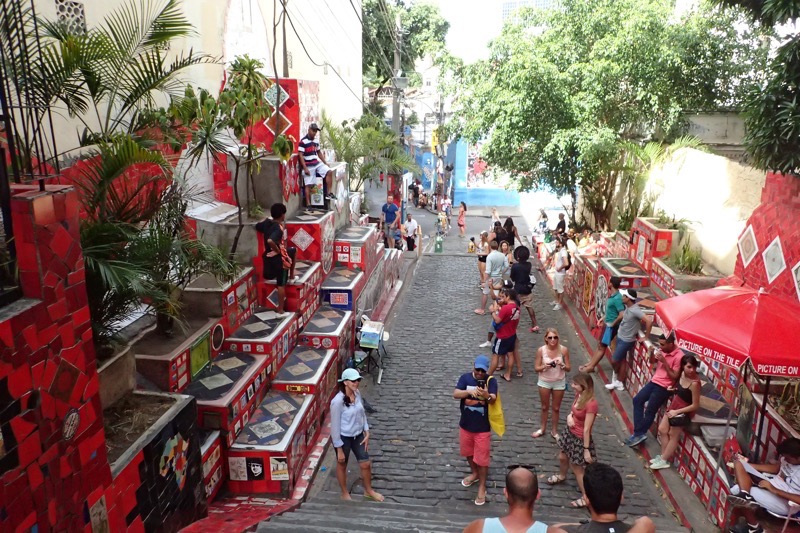
It was seriously cool to pick out all the cool little details that gave away where tiles had come from. Selarón was constantly seen working on the steps, day and night, and is said to have have continued the work until his death – which unfortunately occurred on the famous steps in January 2013.
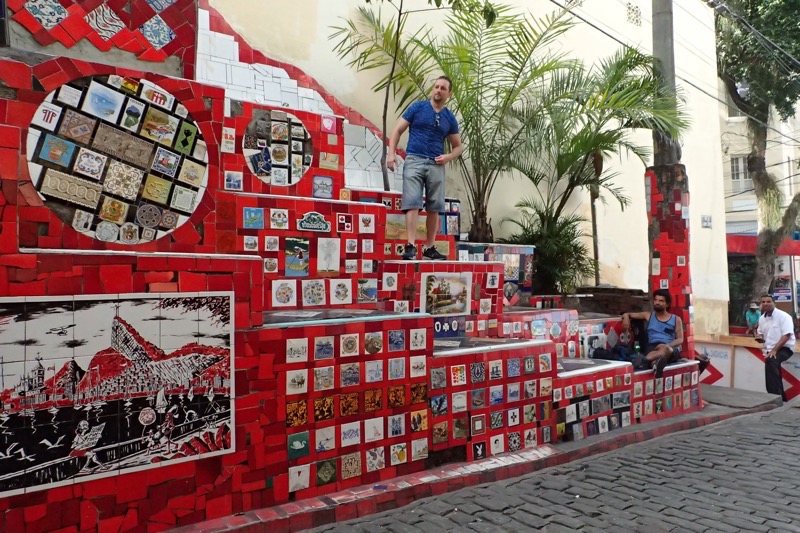
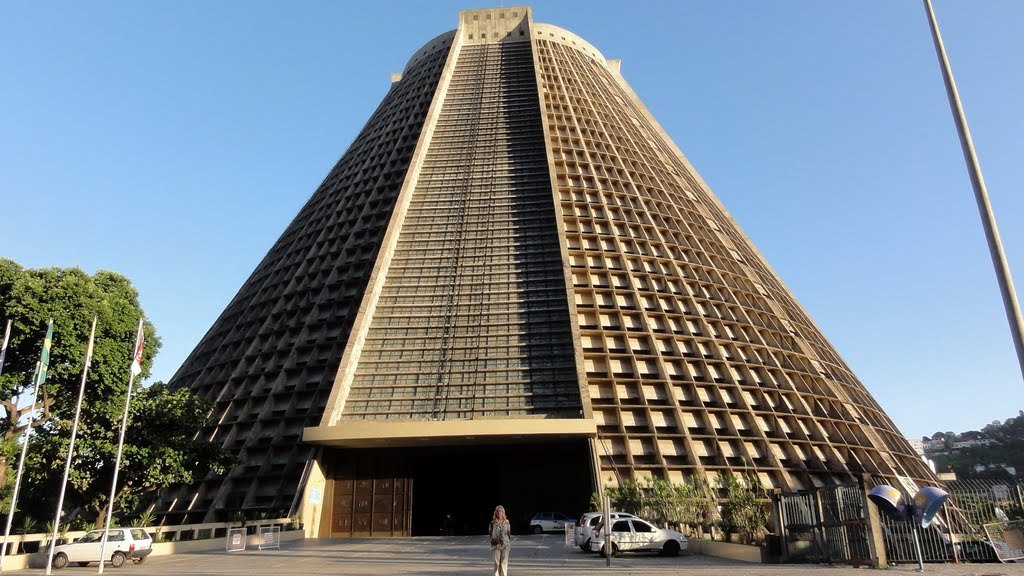
After this we attempted to go visit the metropolitan cathedral, which is also known as: the Cathedral of São Sebastião do Rio de Janeiro. Lettie told us this cathedral was built in the 1970s in an attempt to reinvigorate people’s interest in the church by ‘being more contemporary’. I have to say – it is the most butt ugly cathedral I have ever seen. Period. I do not understand why it has been built to look like a cheap Las Vegas hotel.
It is a weird conical shape, being about 106m in diameter and 75m in height, and according to Lettie, designed to accommodate up to 20,000 people. It is apparently quite pretty inside with large modern stained glass windows, but unfortunately due to political protests that were going on in the Downtown/Centro area, it was completely closed and was not allowing visitors. I think the stained glass would have to be pretty spectacular to overcome the general ‘meh’ feeling that the architecture evokes. This city has so many amazing old buildings, I don’t know why you would choose to put something so jarring on the landscape (London’s Pickle anyone?).
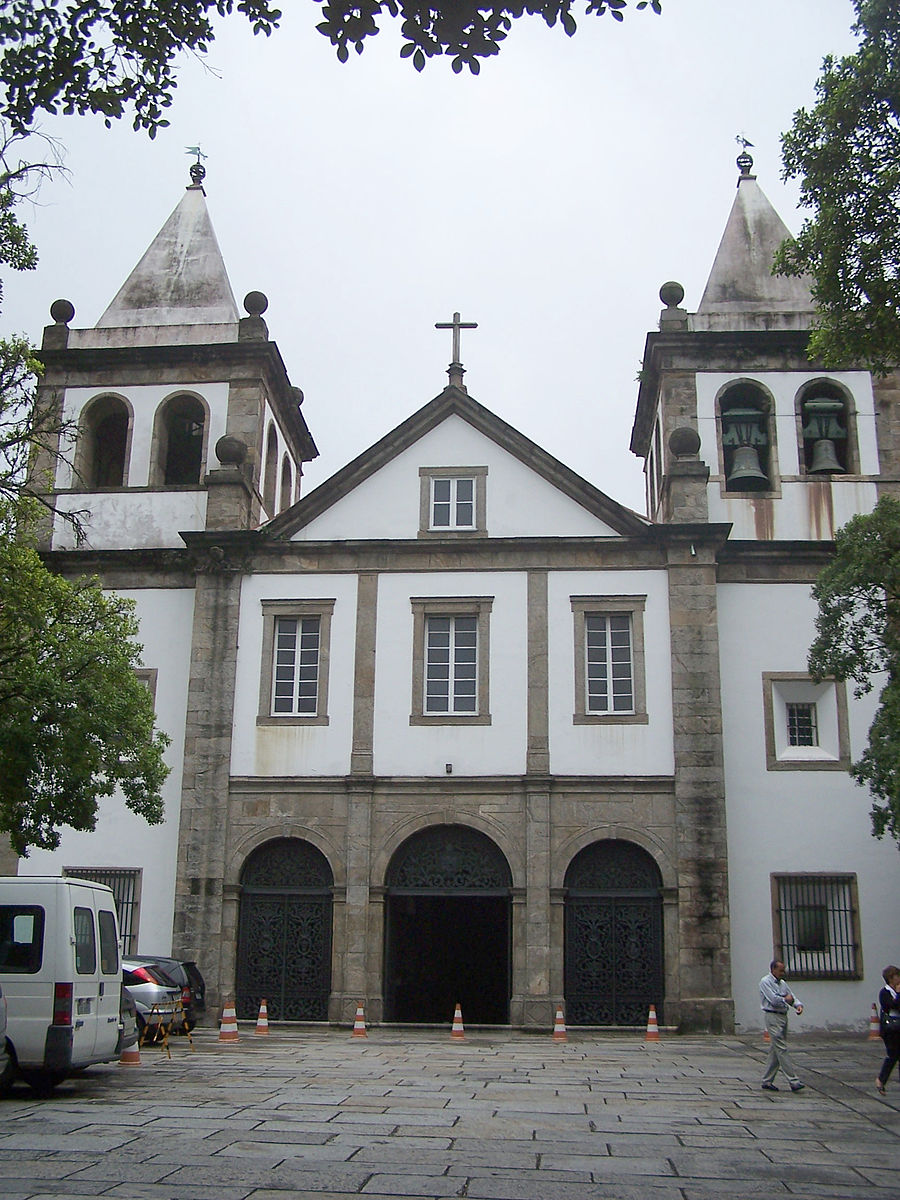
After our fly by The World’s Most Obscure Cathedral Ever, we went to see ‘a monastery’. The modestly named ‘monastery’ belonged to the Abbey of Our Lady of Montserrat, but is more commonly known as the Monster de São Bento – the Monastery of St Benedict. Obviously it is a Benedictine monastery, and it is not far from Rio’s downtown area. The abbey was established in 1590, and the church itself is a great example of much of Brazil’s colonial architecture… you can see many buildings in this style in various states of repair or dilapidation throughout the city.
 The interior of the church is what I would call a lavish baroque or rococo style (17thC – 18thC). It is covered, and I mean, every surface is covered, in lavishly curlicued timber carvings that have been gilded in what must be a tonne of gold leaf. I don’t think I have ever seen anything quite this ornate, even in the many European churches and palaces that I have visited. It is really quite special, and I simply can not imagine what the upkeep on the church must be. Personally, I don’t know if I think it is beautiful – this type of high baroque, over the top, ornamentation isn’t really my thing… but it certainly is quite the spectacle, and well worth adding to your list if you are visiting Rio.
The interior of the church is what I would call a lavish baroque or rococo style (17thC – 18thC). It is covered, and I mean, every surface is covered, in lavishly curlicued timber carvings that have been gilded in what must be a tonne of gold leaf. I don’t think I have ever seen anything quite this ornate, even in the many European churches and palaces that I have visited. It is really quite special, and I simply can not imagine what the upkeep on the church must be. Personally, I don’t know if I think it is beautiful – this type of high baroque, over the top, ornamentation isn’t really my thing… but it certainly is quite the spectacle, and well worth adding to your list if you are visiting Rio.


Next we ventured into the Lapa area, where were planning on doing dinner, but didn’t – long boring story omitted – and instead ended up wandering around the local markets, hunting for quilt fabric – long and slightly quirky story omitted, that will likely be added at a later date!
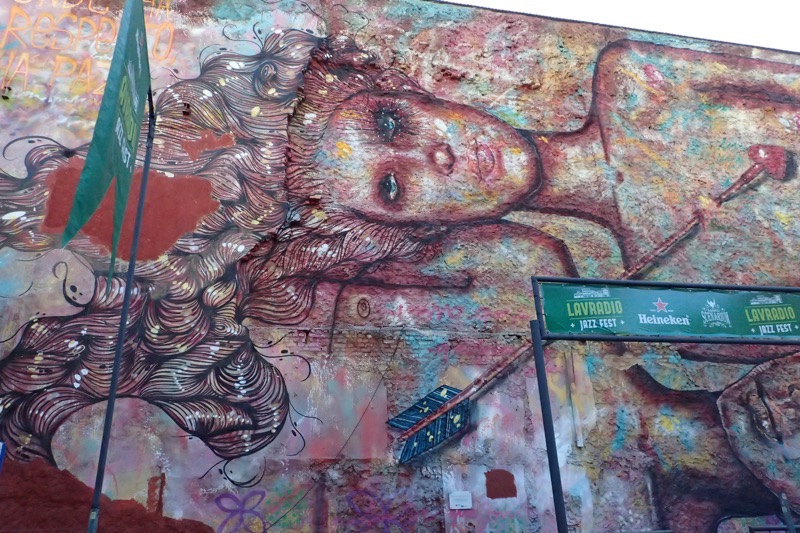
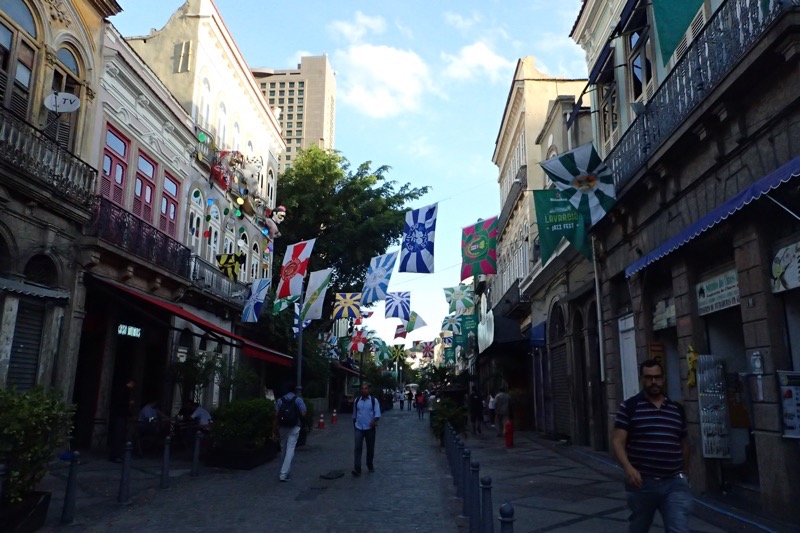
I didn’t take any photos of the local markets – it was getting dark, and this was the sort of place where standing out as tourists was definitely not advisable! But we found some fabulous quilting materials that will allow Aunty Mary to continue on with her little hand project that she has been working on during our long sea days.
All up we had an amazing day, just falling in love with Rio. I can’t wait to come back some day. 🙂
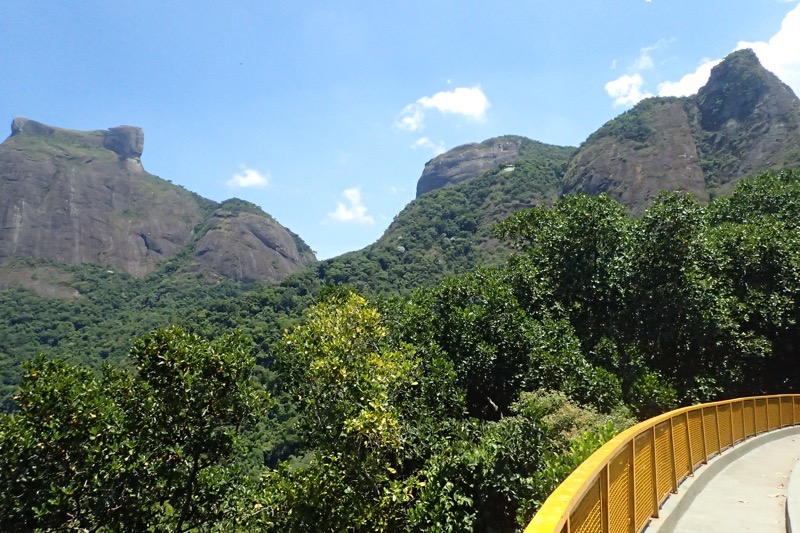 Remember this picture from yesterday? Can you see that little white dot up towards the top of the mountain on the right hand side of the valley? Well, today, we decided to go up there… and jump!
Remember this picture from yesterday? Can you see that little white dot up towards the top of the mountain on the right hand side of the valley? Well, today, we decided to go up there… and jump!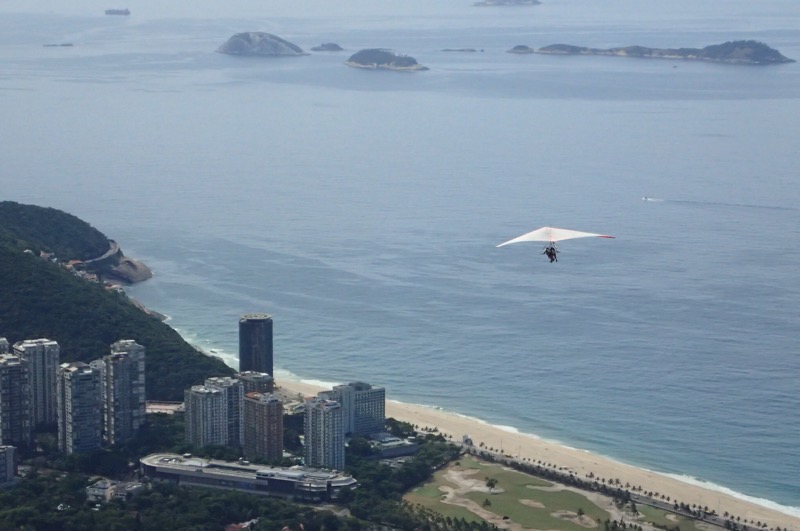 This picture is Aunty Mary flying off towards Leblon in a hang glider!
This picture is Aunty Mary flying off towards Leblon in a hang glider!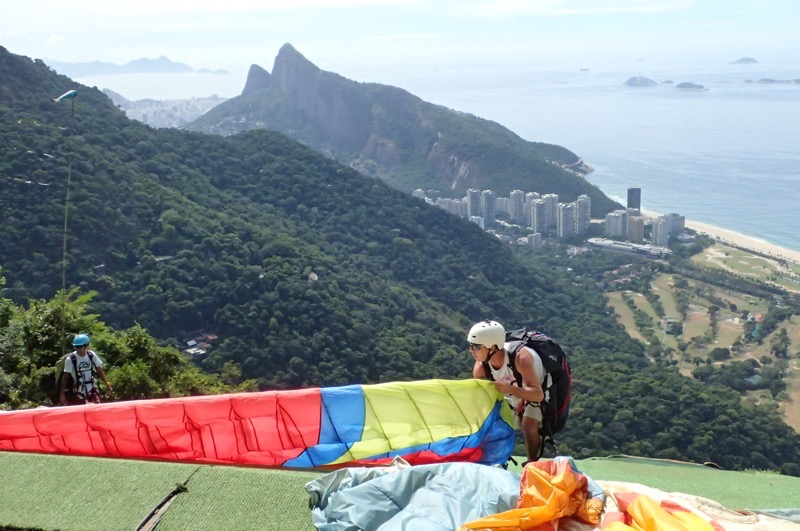 Optimistic I hope…
Optimistic I hope…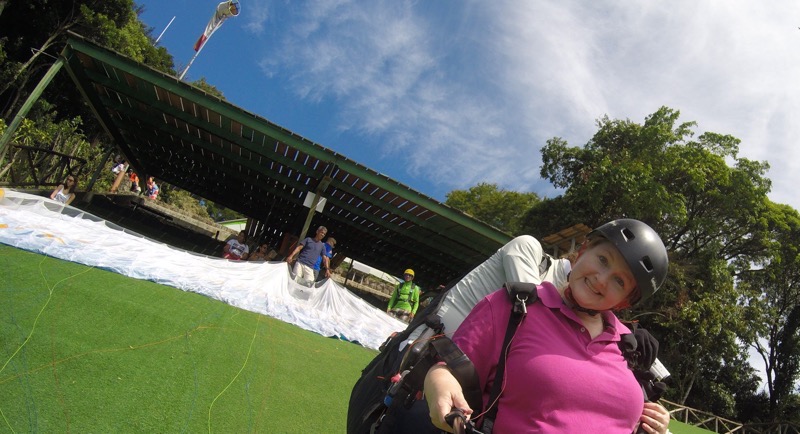 Okay. The trepidation bit sets in! Eek!
Okay. The trepidation bit sets in! Eek!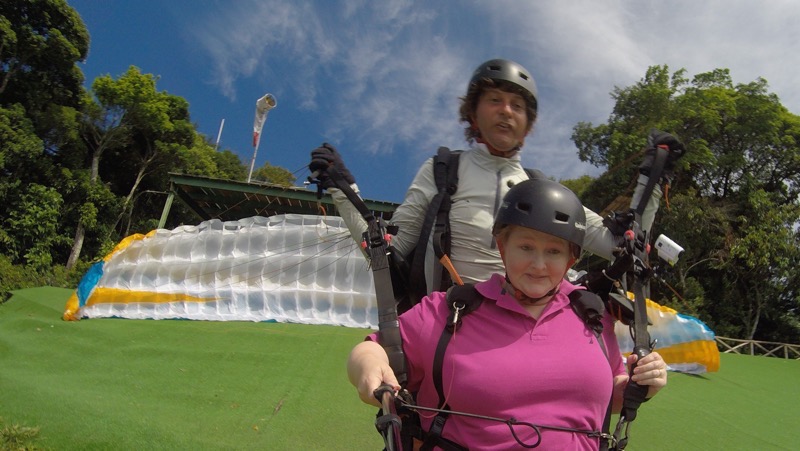 And then we were running off a cliff and into the air! The pilot said he was going towards the mountain to try and ride the thermals up from the heat rising off the rocks, and jeebus – we must have gone up about 100m higher than the launch point, which was already 540m above the beach.
And then we were running off a cliff and into the air! The pilot said he was going towards the mountain to try and ride the thermals up from the heat rising off the rocks, and jeebus – we must have gone up about 100m higher than the launch point, which was already 540m above the beach. 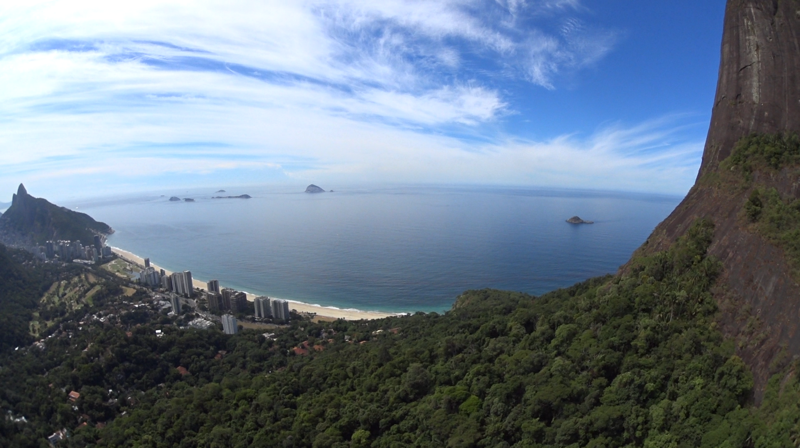
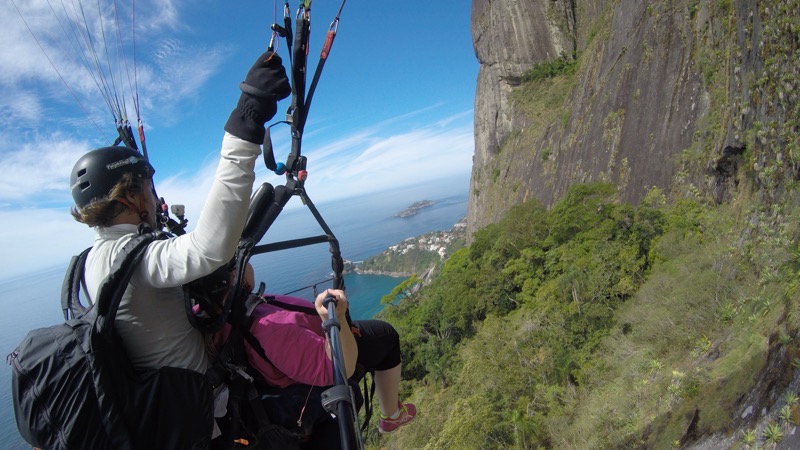 It was just beautiful. I loved it! The views were unparalleled, and I loved it when the pilot spun the ‘chute around; it is like a rollercoaster without all the jerkiness and with a way better view.
It was just beautiful. I loved it! The views were unparalleled, and I loved it when the pilot spun the ‘chute around; it is like a rollercoaster without all the jerkiness and with a way better view.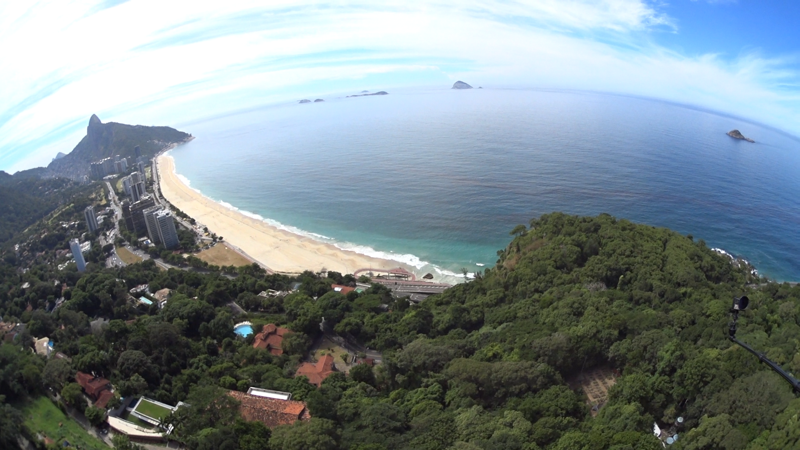 We went so close to the mountain, you could see our shadow and it looked nearly life size. Oi! I swear we were barely 20m away from the rock at some points…
We went so close to the mountain, you could see our shadow and it looked nearly life size. Oi! I swear we were barely 20m away from the rock at some points…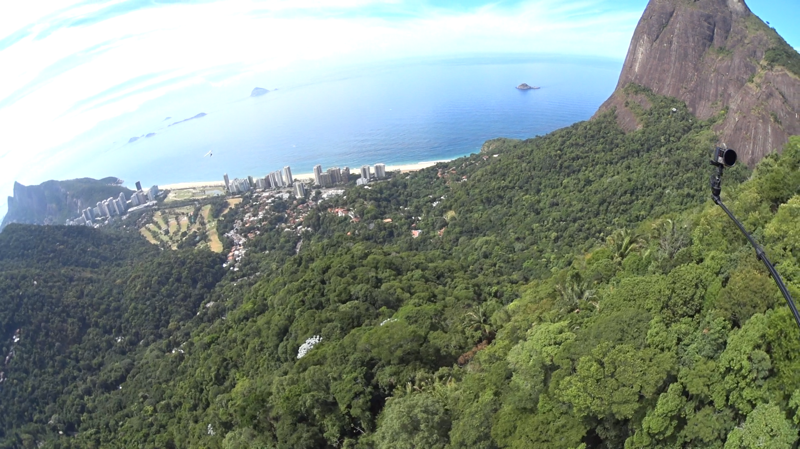
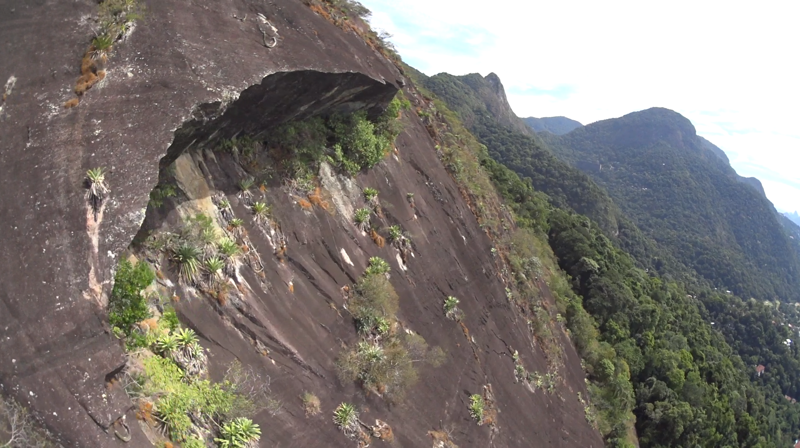 Then it was smooth sailing down to the beach for a soft landing in a grass park nearby.
Then it was smooth sailing down to the beach for a soft landing in a grass park nearby.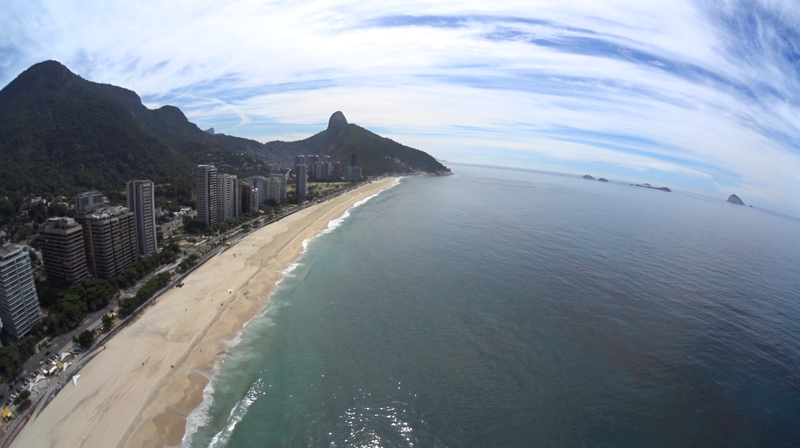
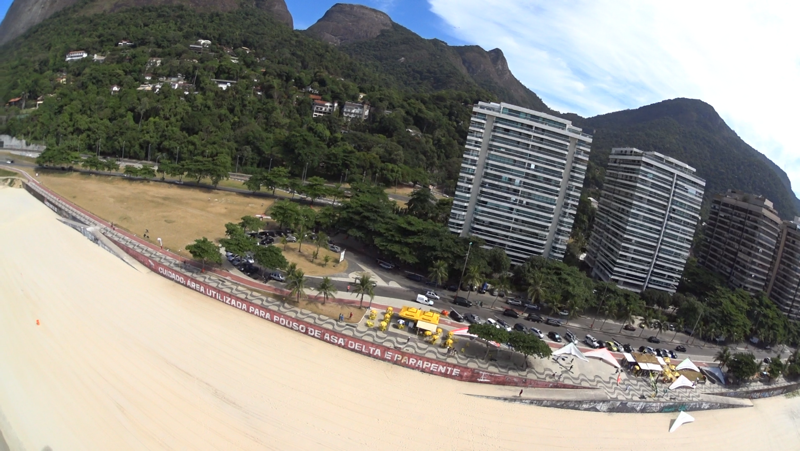
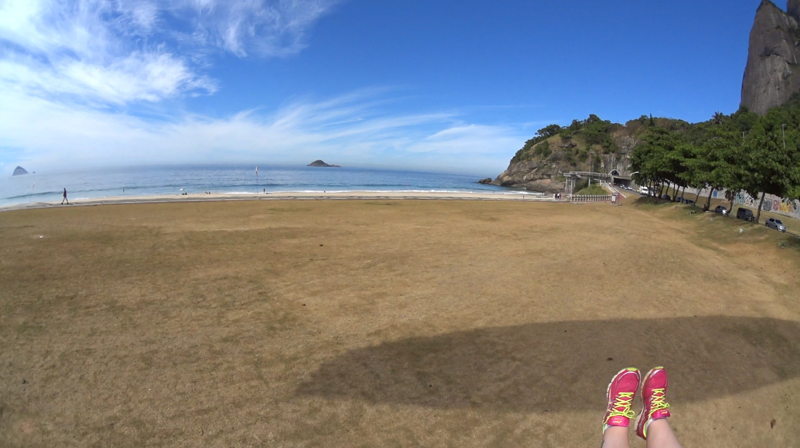 I had such a great time, I have every intention of going white water rafting, sky diving, bungee jumping, jet boating and all good things. All the things that I have always said ‘no’ to. 🙂
I had such a great time, I have every intention of going white water rafting, sky diving, bungee jumping, jet boating and all good things. All the things that I have always said ‘no’ to. 🙂



















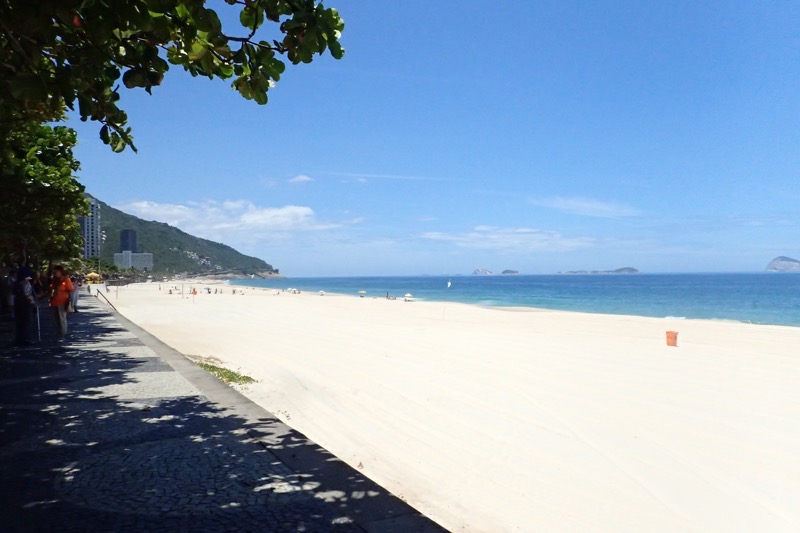
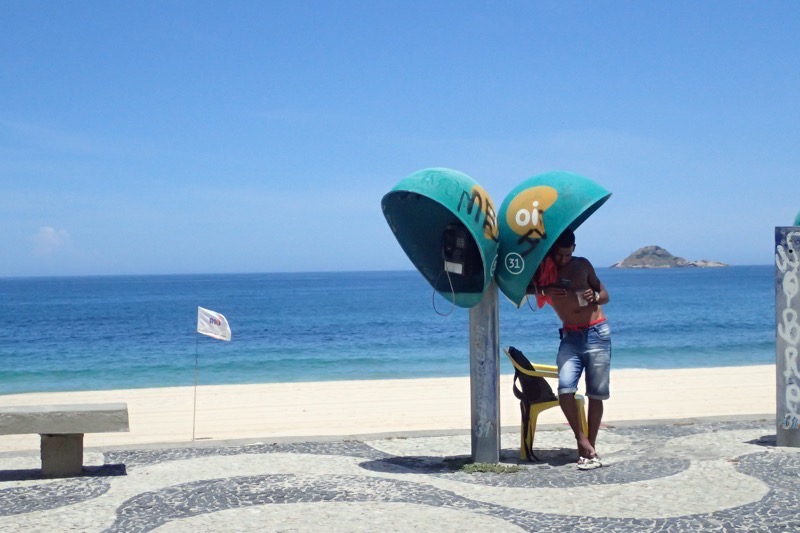
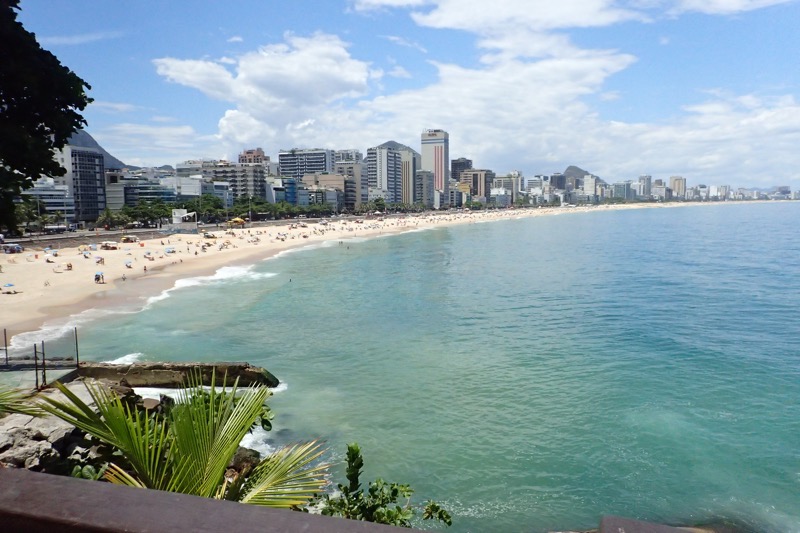
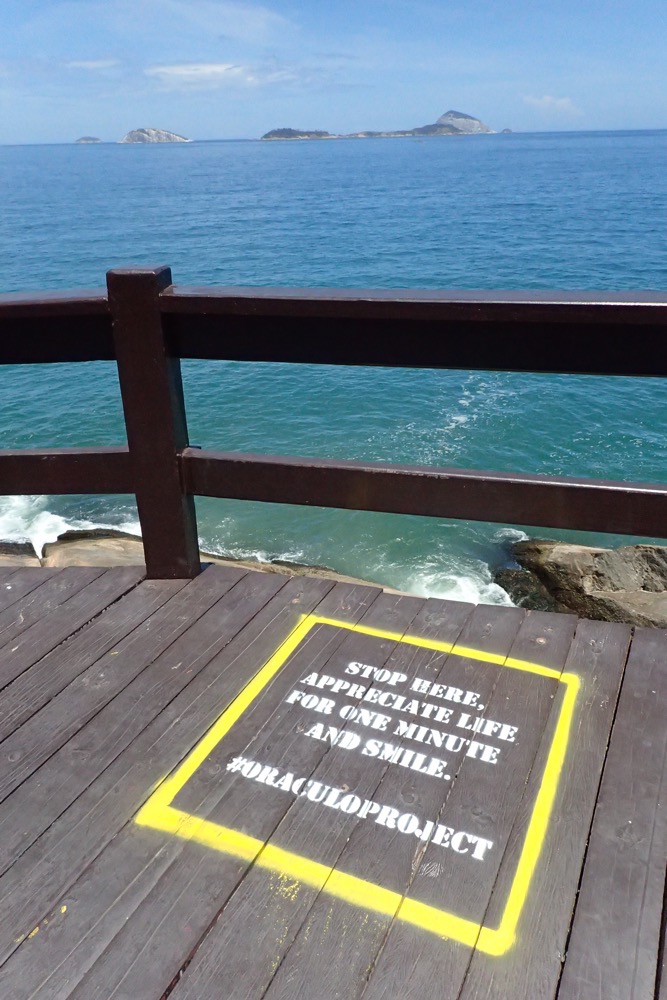
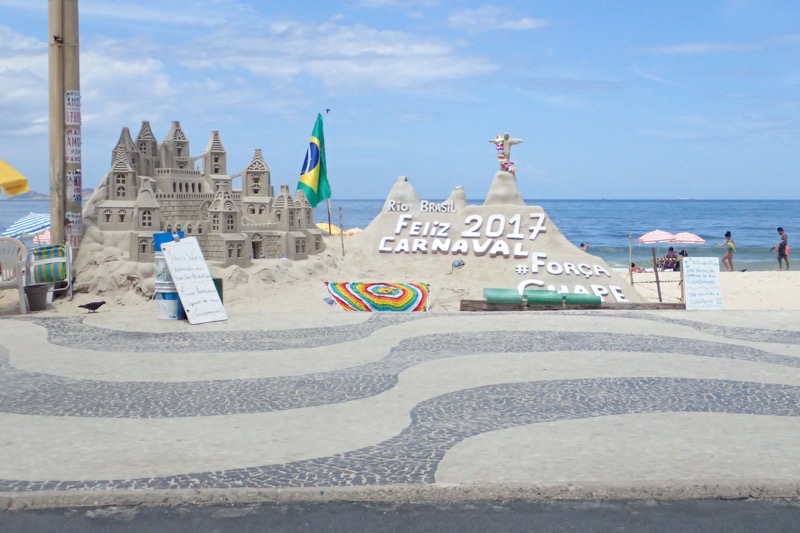
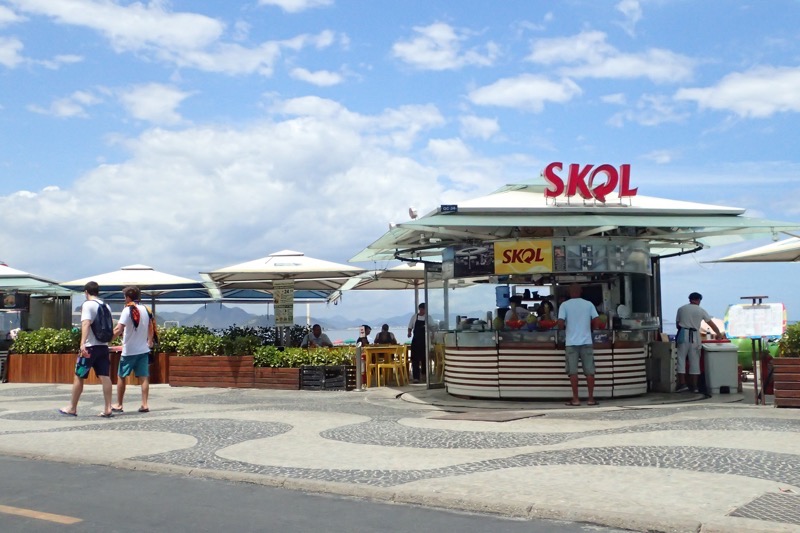
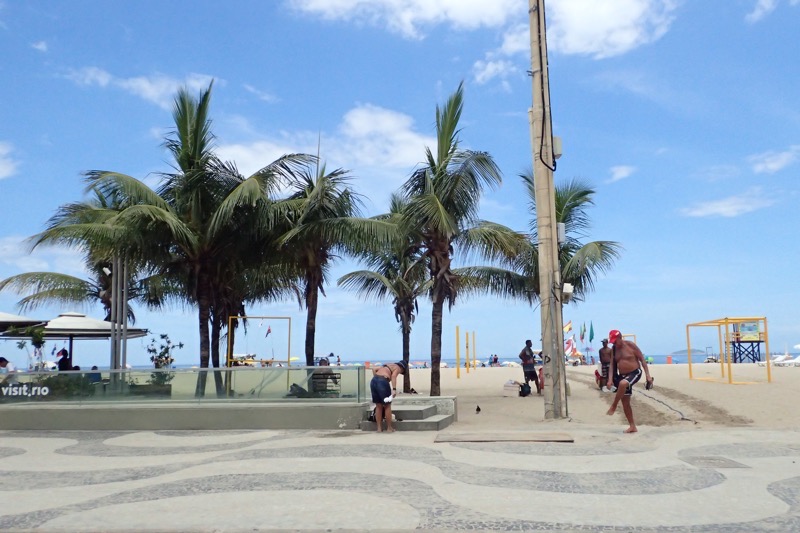
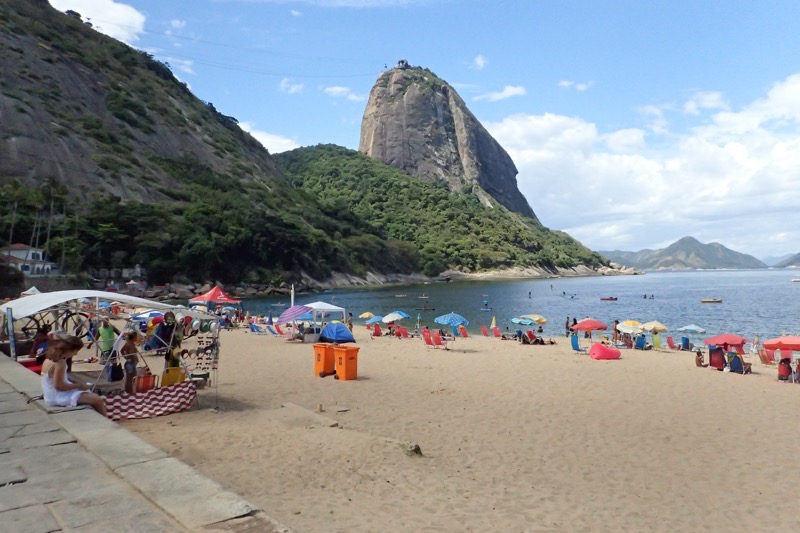







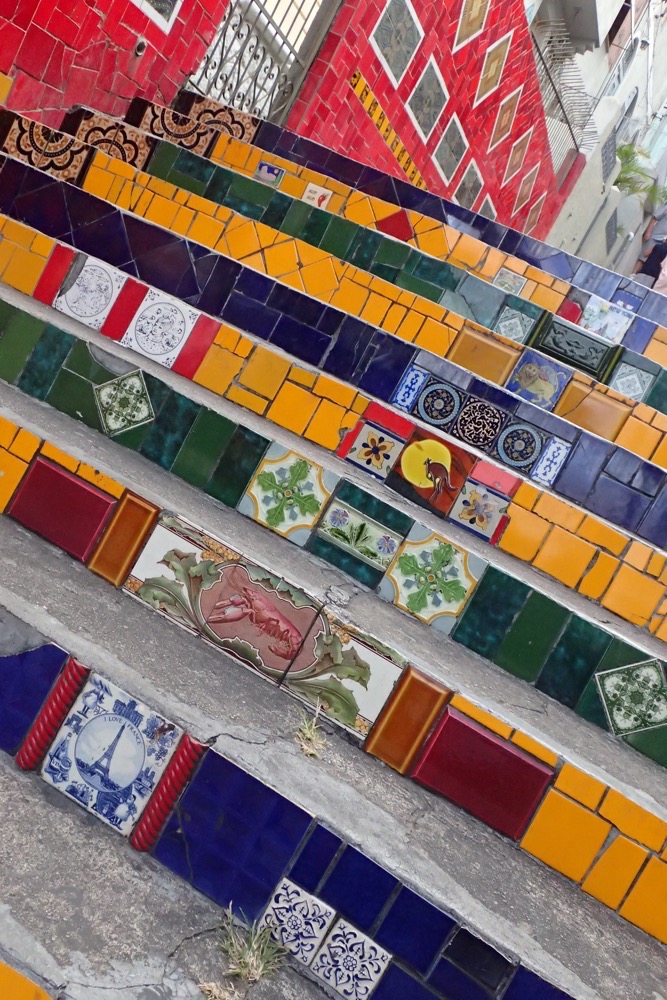






 The interior of the church is what I would call a lavish baroque or rococo style (17thC – 18thC). It is covered, and I mean, every surface is covered, in lavishly curlicued timber carvings that have been gilded in what must be a tonne of gold leaf. I don’t think I have ever seen anything quite this ornate, even in the many European churches and palaces that I have visited. It is really quite special, and I simply can not imagine what the upkeep on the church must be. Personally, I don’t know if I think it is beautiful – this type of high baroque, over the top, ornamentation isn’t really my thing… but it certainly is quite the spectacle, and well worth adding to your list if you are visiting Rio.
The interior of the church is what I would call a lavish baroque or rococo style (17thC – 18thC). It is covered, and I mean, every surface is covered, in lavishly curlicued timber carvings that have been gilded in what must be a tonne of gold leaf. I don’t think I have ever seen anything quite this ornate, even in the many European churches and palaces that I have visited. It is really quite special, and I simply can not imagine what the upkeep on the church must be. Personally, I don’t know if I think it is beautiful – this type of high baroque, over the top, ornamentation isn’t really my thing… but it certainly is quite the spectacle, and well worth adding to your list if you are visiting Rio.




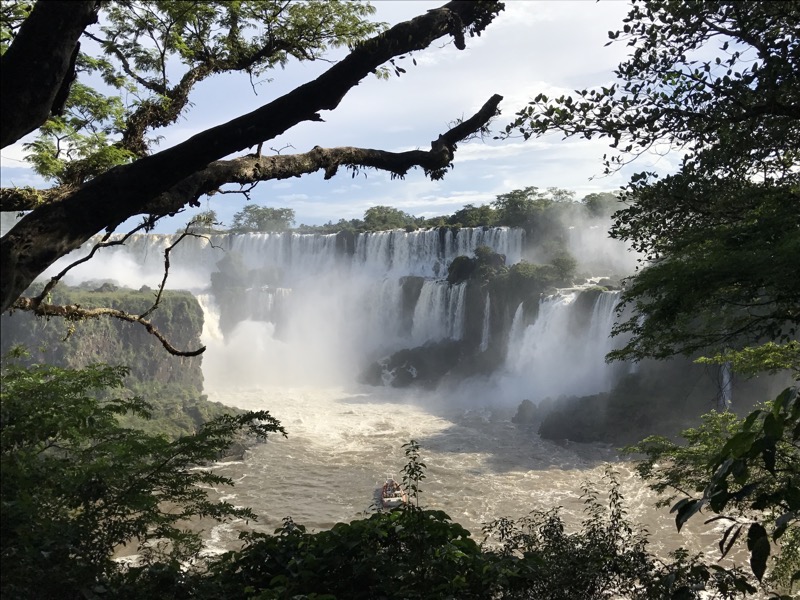
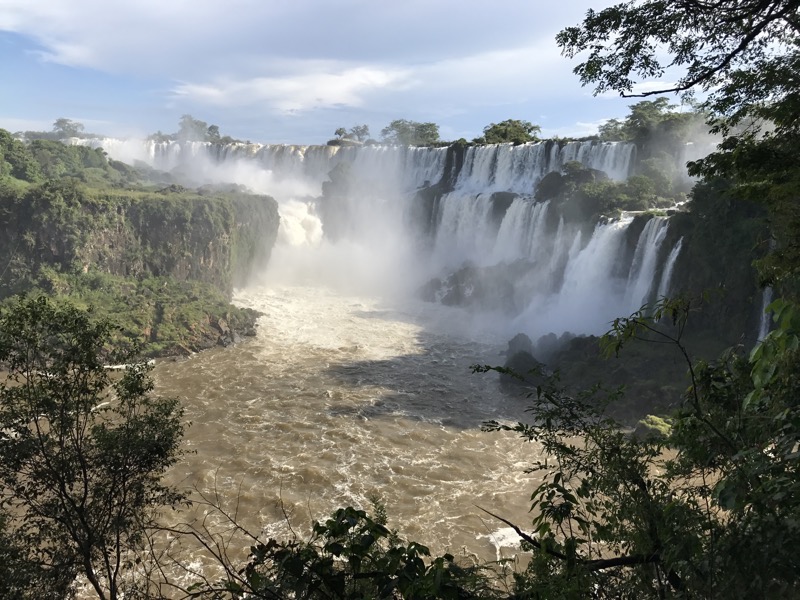 According to local legend, a god planned to marry a beautiful woman (they’re always beautiful, yeah?), who jilted him for her human lover, and in a canoe they attempted to escape down the Iguazu River. In a fit of rage, the god destroyed the river, creating the waterfalls and condemning the lovers to falling in the water for all eternity… or something like that.
According to local legend, a god planned to marry a beautiful woman (they’re always beautiful, yeah?), who jilted him for her human lover, and in a canoe they attempted to escape down the Iguazu River. In a fit of rage, the god destroyed the river, creating the waterfalls and condemning the lovers to falling in the water for all eternity… or something like that.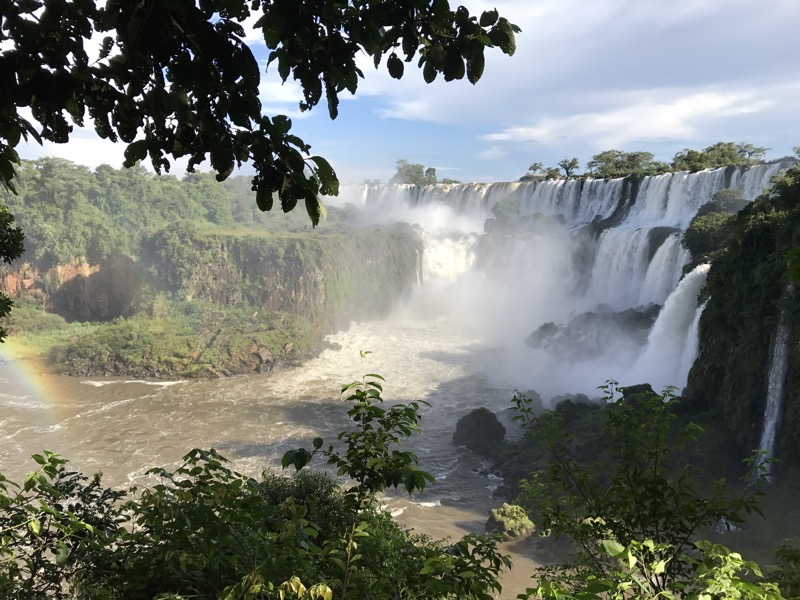
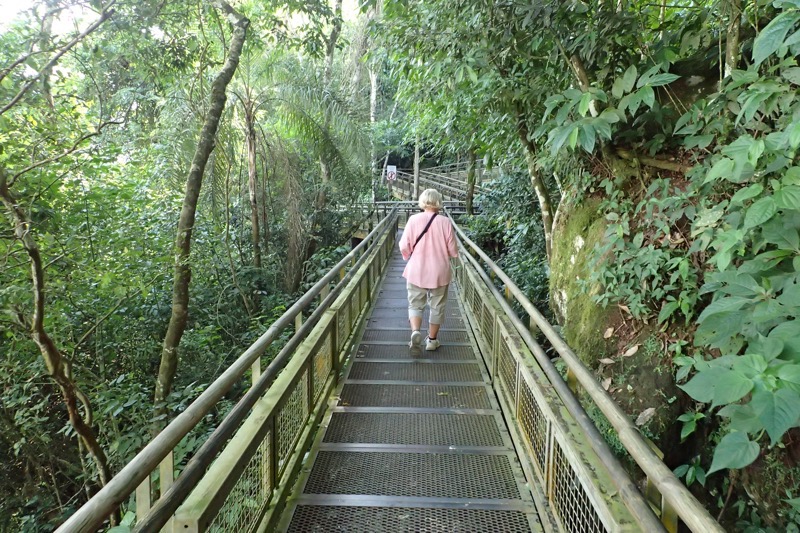 The falls were very impressive, but to me, walking through the rainforest overlooking this wonder of the natural world, just did not feel worth it at all. I felt as though I was forcing myself to smile and participate, and I couldn’t not stop thinking about the people in our group who were left behind. I just felt awful all afternoon. I wished I had not come and that someone more able to shake off the incident had come in my place. Anyway, we are ‘trying not to talk about the war’, three days later, and so far; success = minimal.
The falls were very impressive, but to me, walking through the rainforest overlooking this wonder of the natural world, just did not feel worth it at all. I felt as though I was forcing myself to smile and participate, and I couldn’t not stop thinking about the people in our group who were left behind. I just felt awful all afternoon. I wished I had not come and that someone more able to shake off the incident had come in my place. Anyway, we are ‘trying not to talk about the war’, three days later, and so far; success = minimal.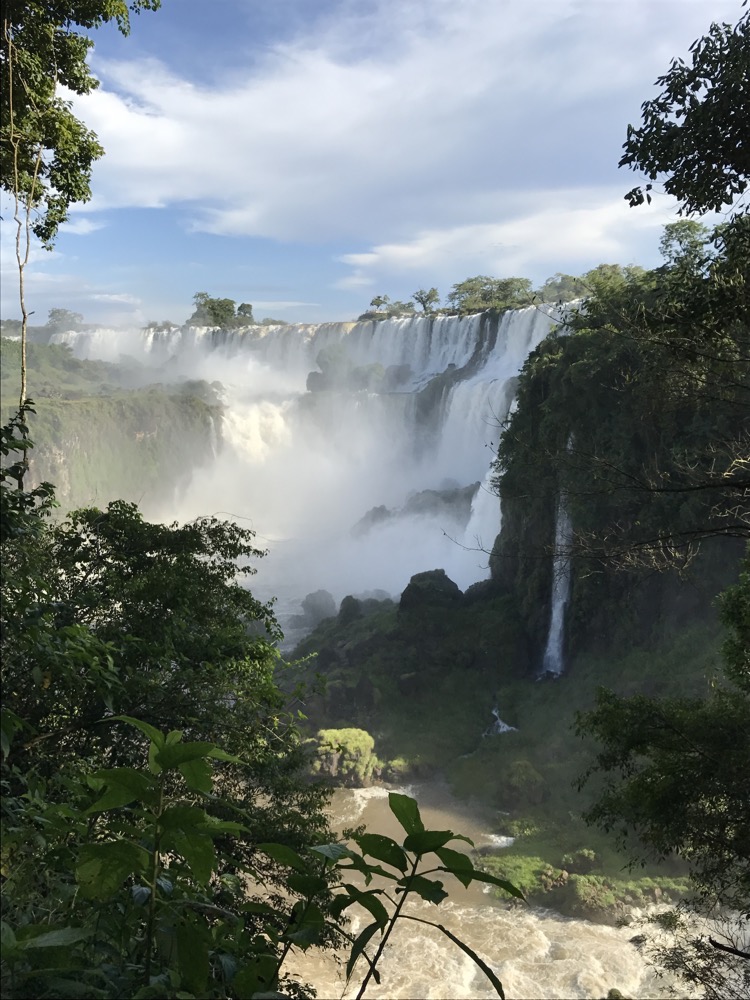
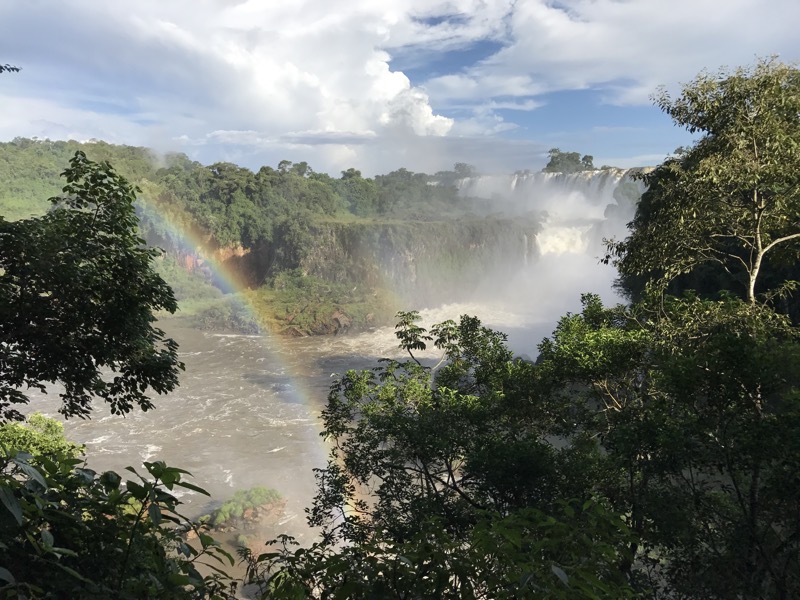
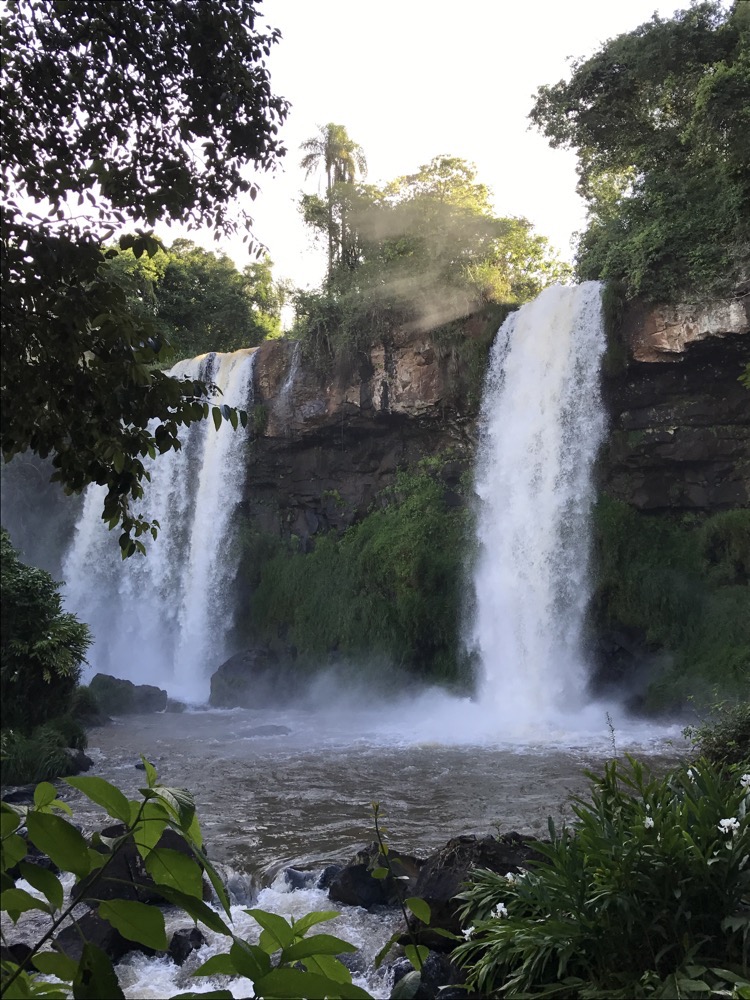 On another note, we saw wild toucans in the rainforest and it was the first time this trip that I cursed leaving my heavy and cumbersome DSLR with its L series lenses, at home. Most of the tours we had done involved either vast sweeping Patagonia vistas or getting up close to the wildlife, so I hadn’t really missed it until that moment.
On another note, we saw wild toucans in the rainforest and it was the first time this trip that I cursed leaving my heavy and cumbersome DSLR with its L series lenses, at home. Most of the tours we had done involved either vast sweeping Patagonia vistas or getting up close to the wildlife, so I hadn’t really missed it until that moment.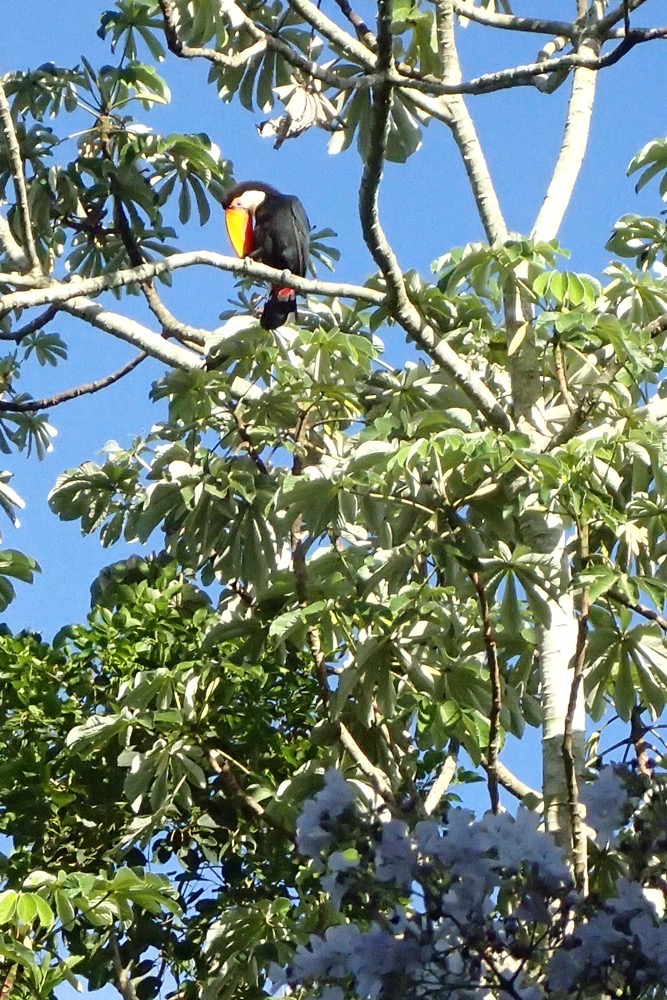
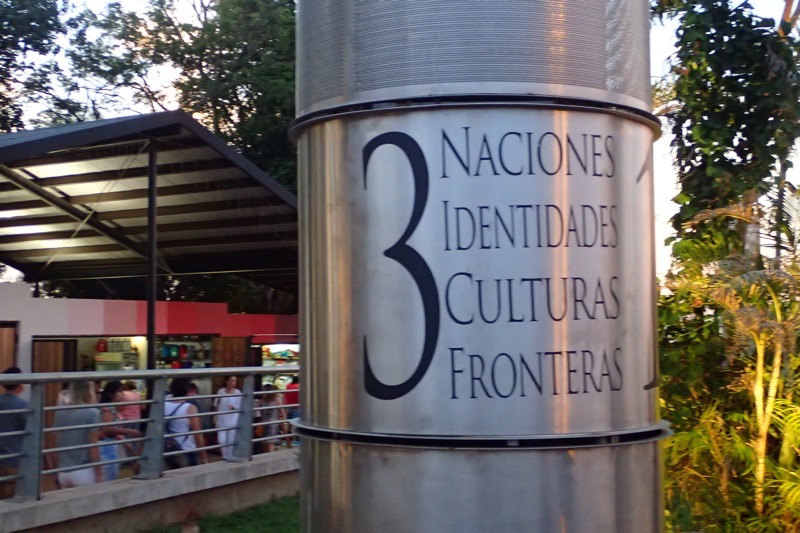
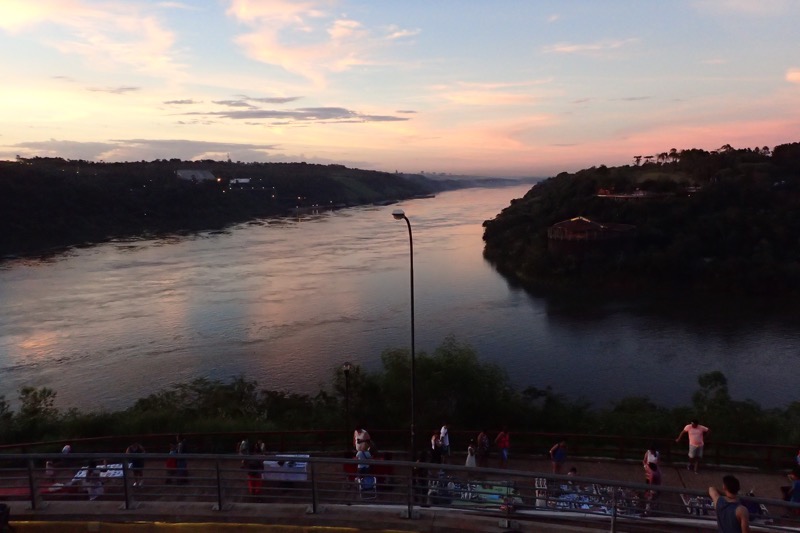 Following our stop at The Landmark, we collectively opted to go to a very touristy local Argentinian Barbecue restaurant, called El Quincho del Toi querido, for dinner – complete with noisy folk music and later, a tango show. The food was plentiful and quite nice (in spite of it being tourist prices, and there being lots of offal in the BBQ), but there was plenty of wine and thank god for that.
Following our stop at The Landmark, we collectively opted to go to a very touristy local Argentinian Barbecue restaurant, called El Quincho del Toi querido, for dinner – complete with noisy folk music and later, a tango show. The food was plentiful and quite nice (in spite of it being tourist prices, and there being lots of offal in the BBQ), but there was plenty of wine and thank god for that.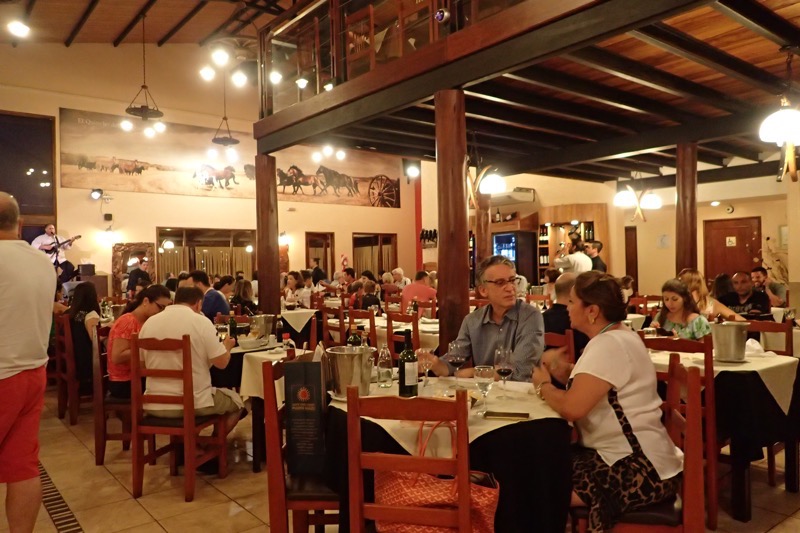
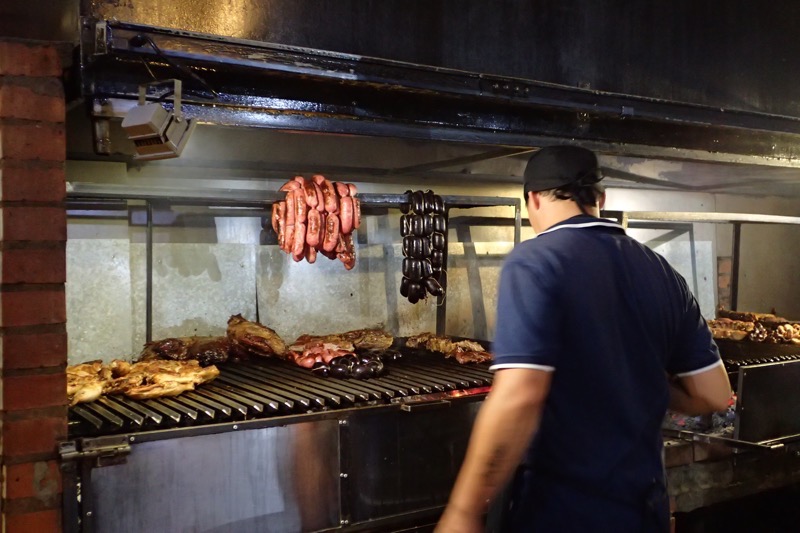
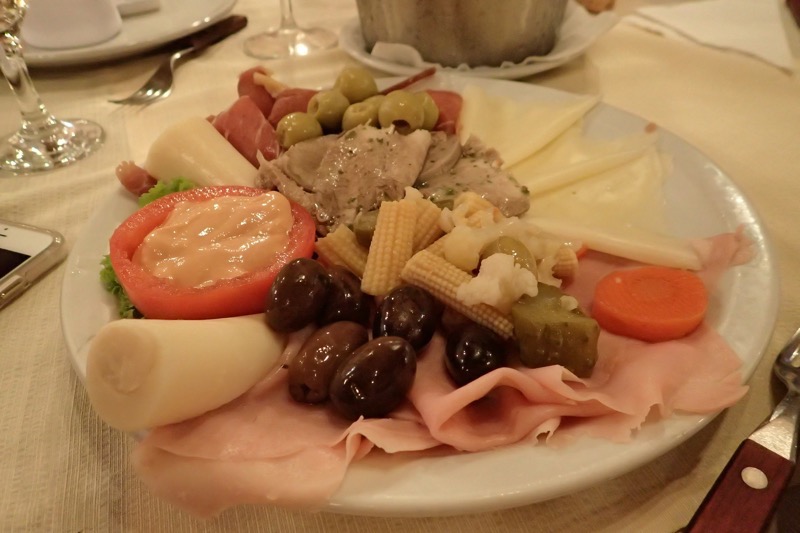
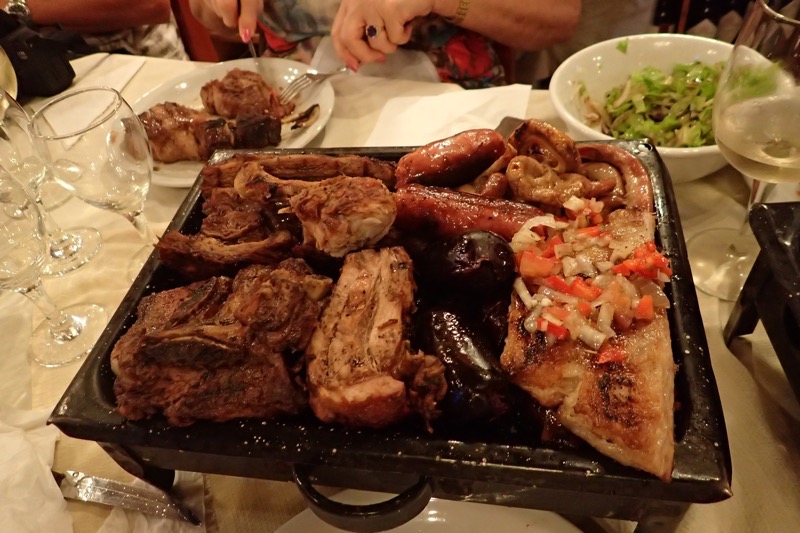
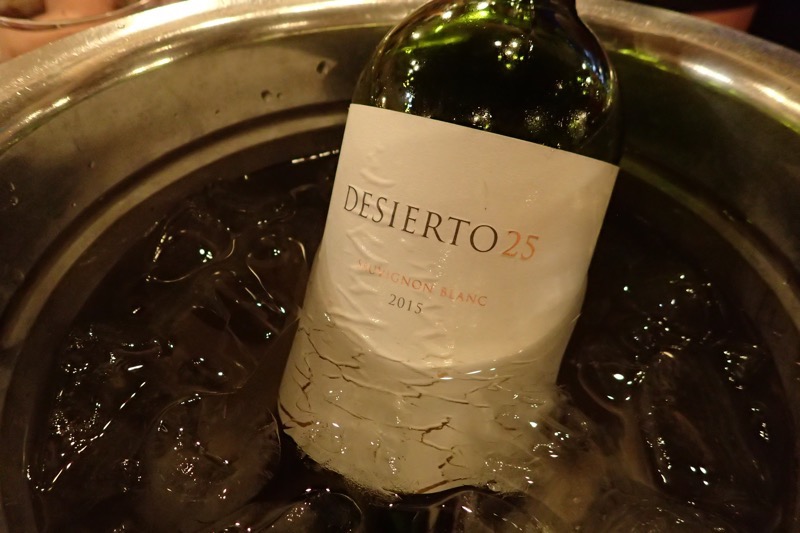
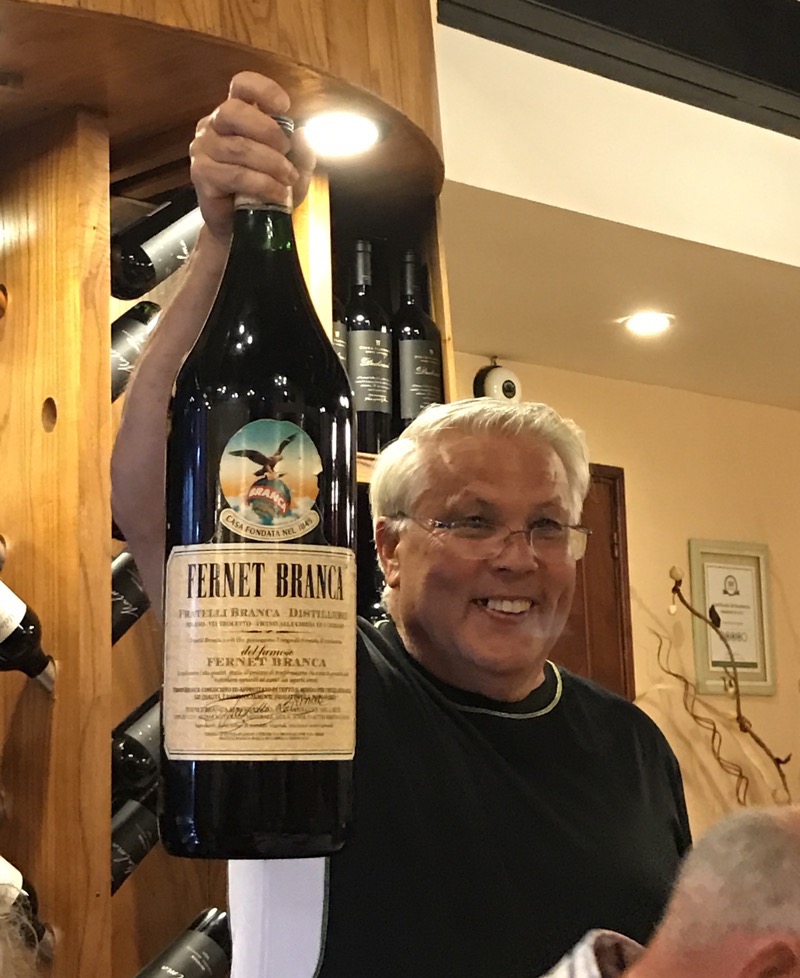 I eventually stopped feeling like I was going to be ill, at about 8pm… which is probably around the same time as we were polishing off our second bottle of wine. I picked up a spare bottle of sauvignon blanc on the way out to have back at the hotel, which Aunty Mary and I knocked off sitting by the pool watching the stars.
I eventually stopped feeling like I was going to be ill, at about 8pm… which is probably around the same time as we were polishing off our second bottle of wine. I picked up a spare bottle of sauvignon blanc on the way out to have back at the hotel, which Aunty Mary and I knocked off sitting by the pool watching the stars. 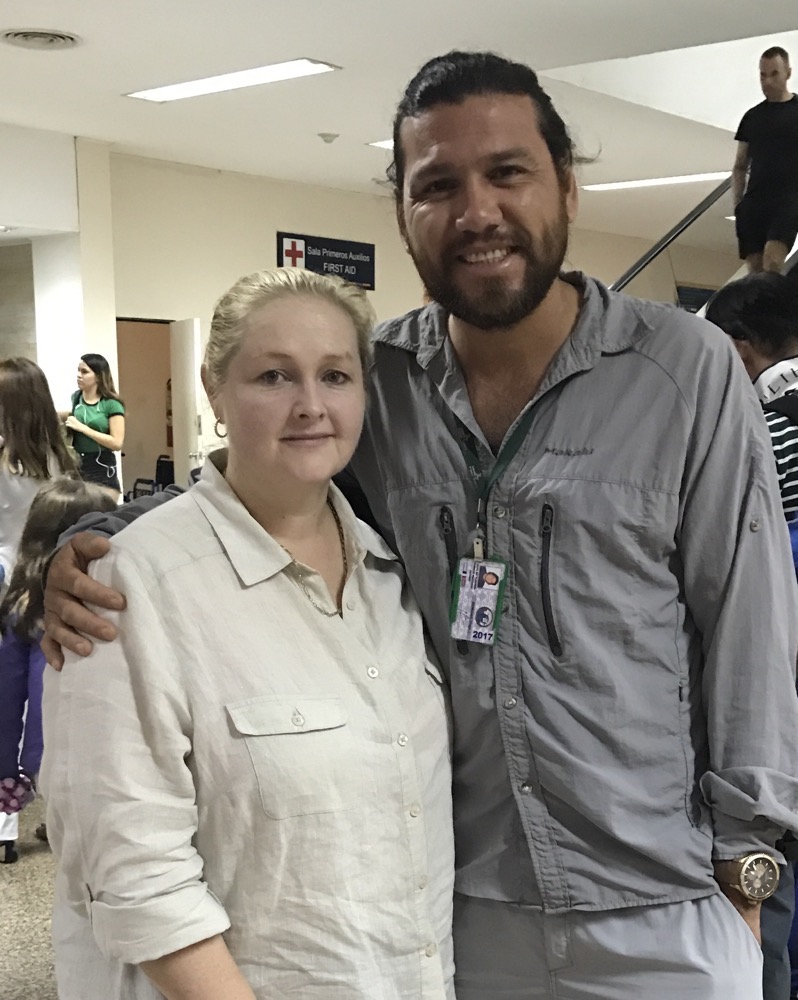 Landscape from the plane…
Landscape from the plane…